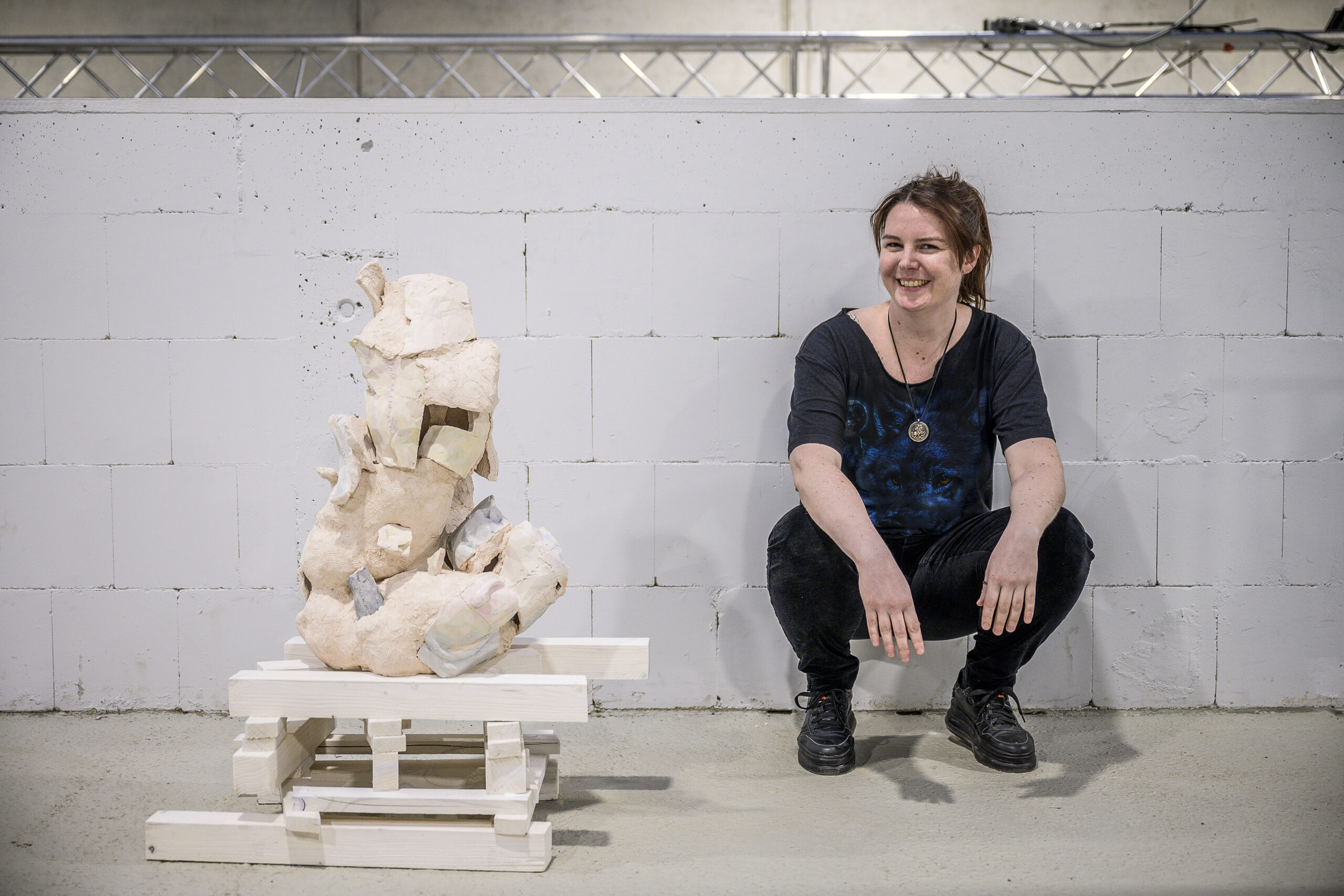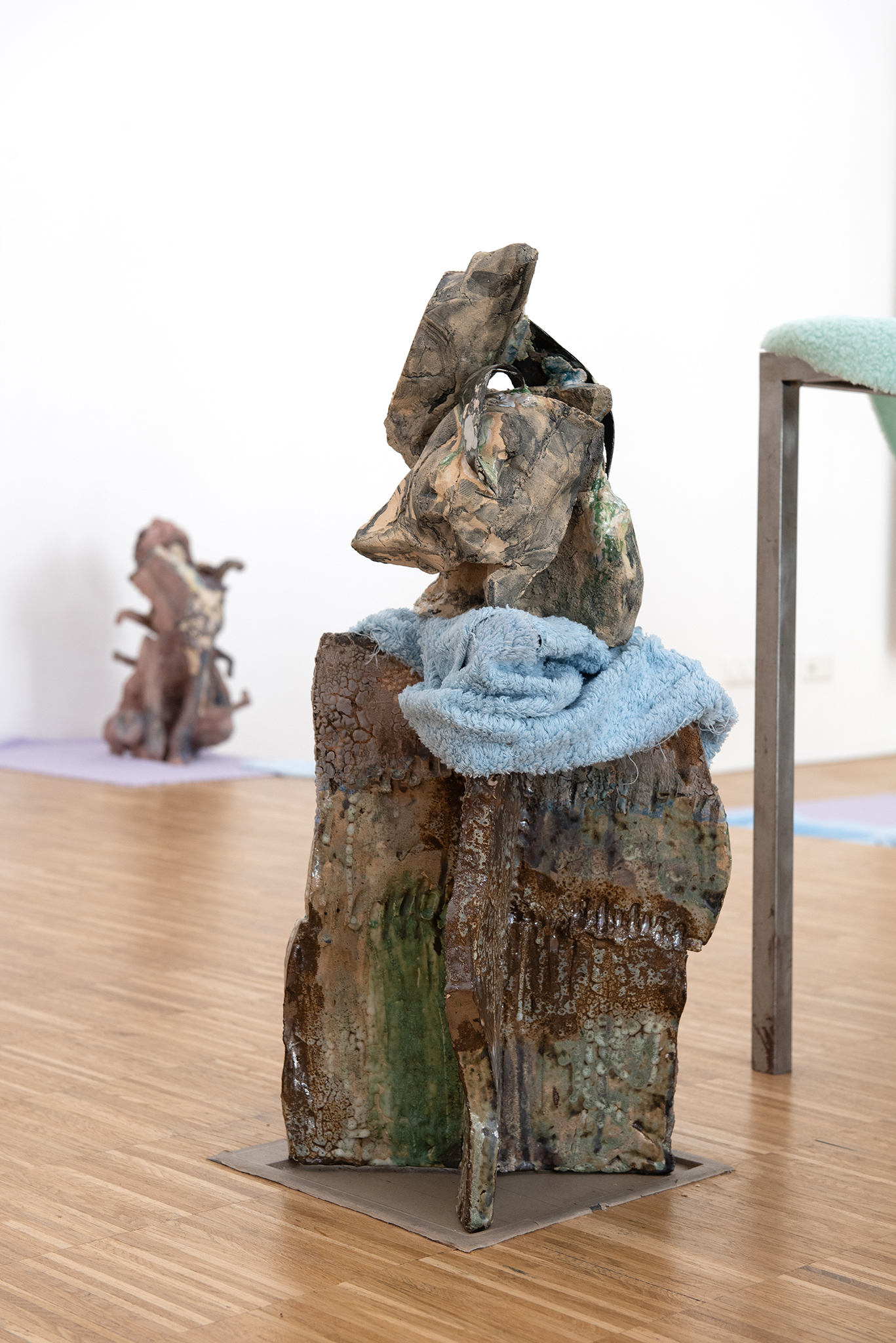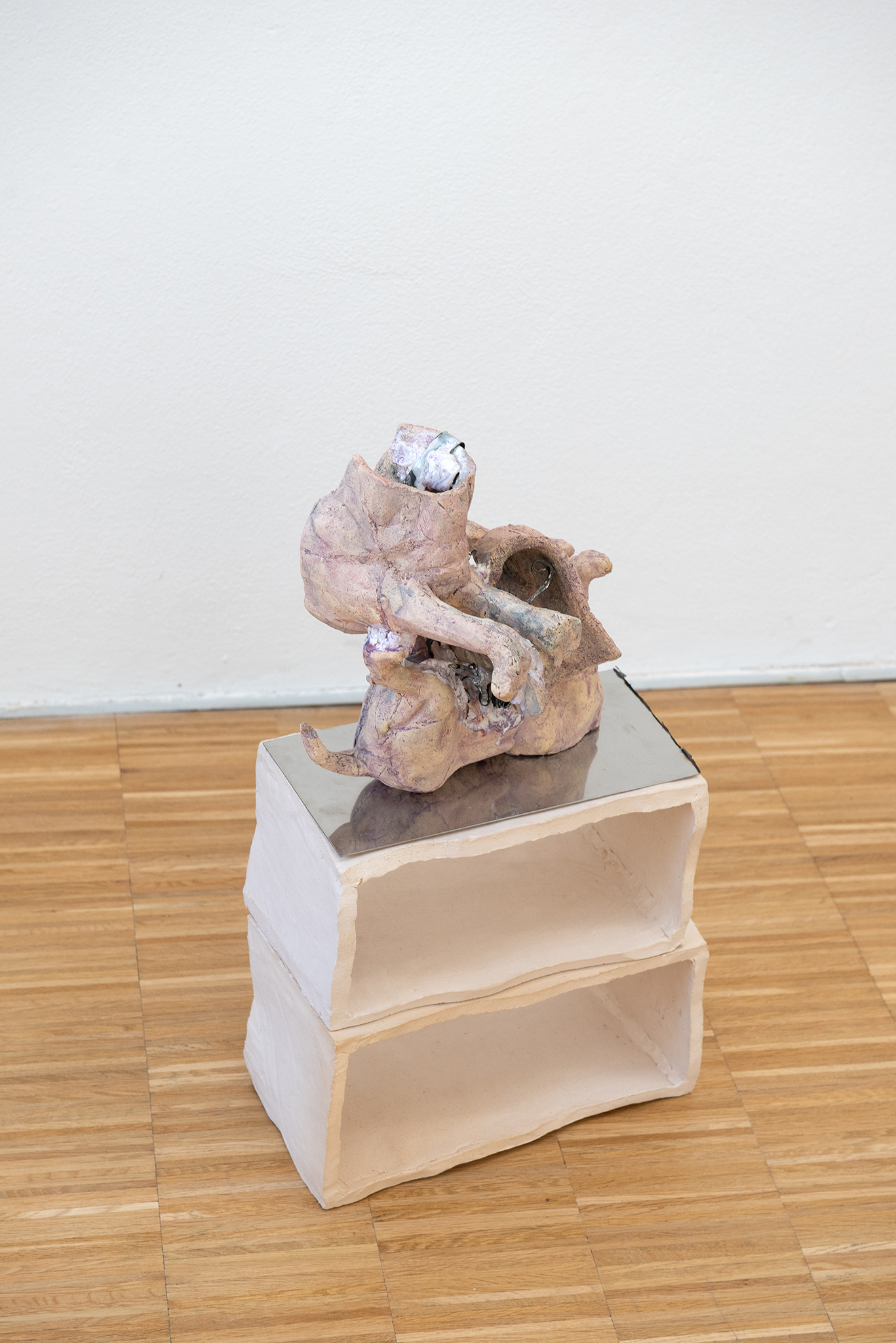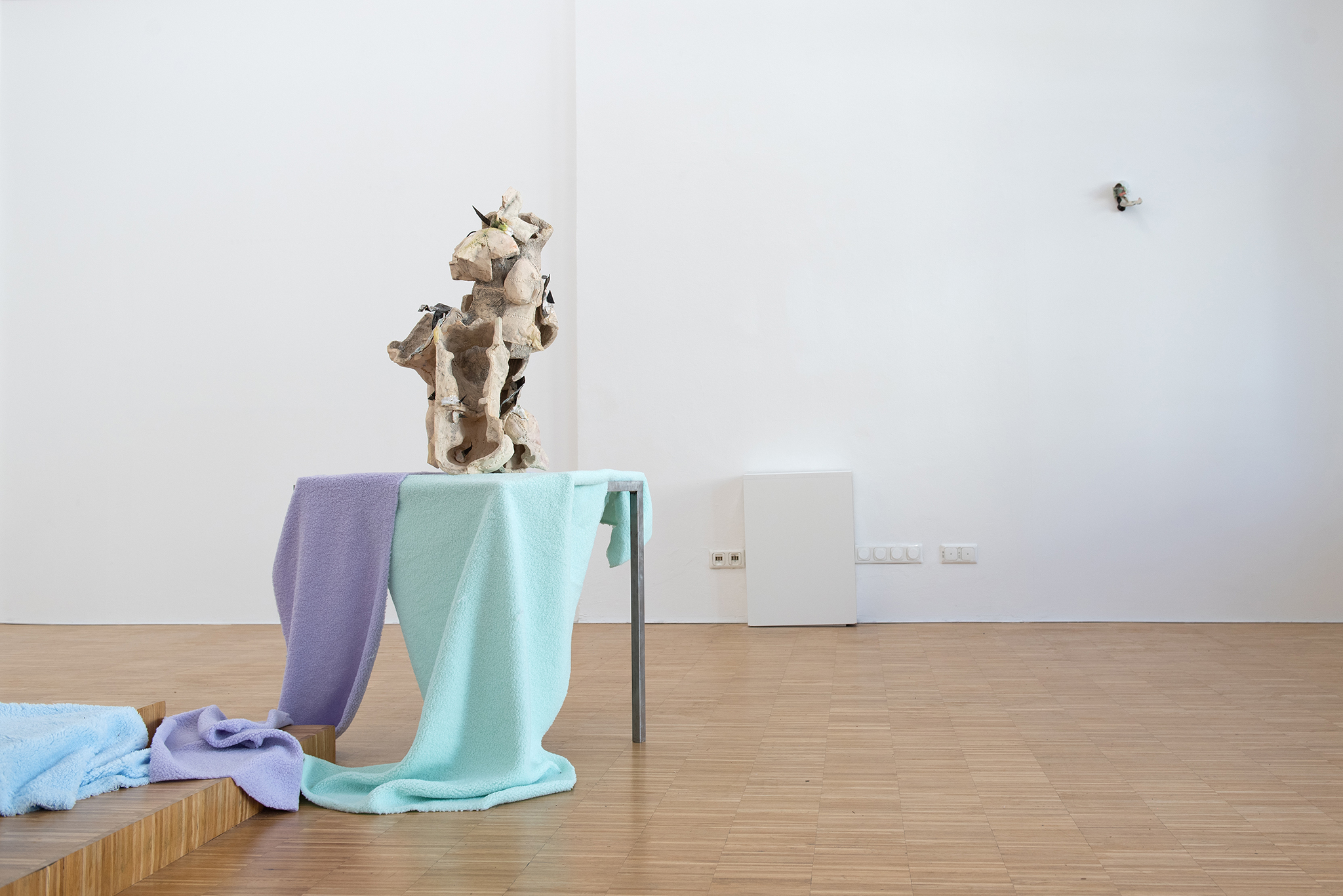
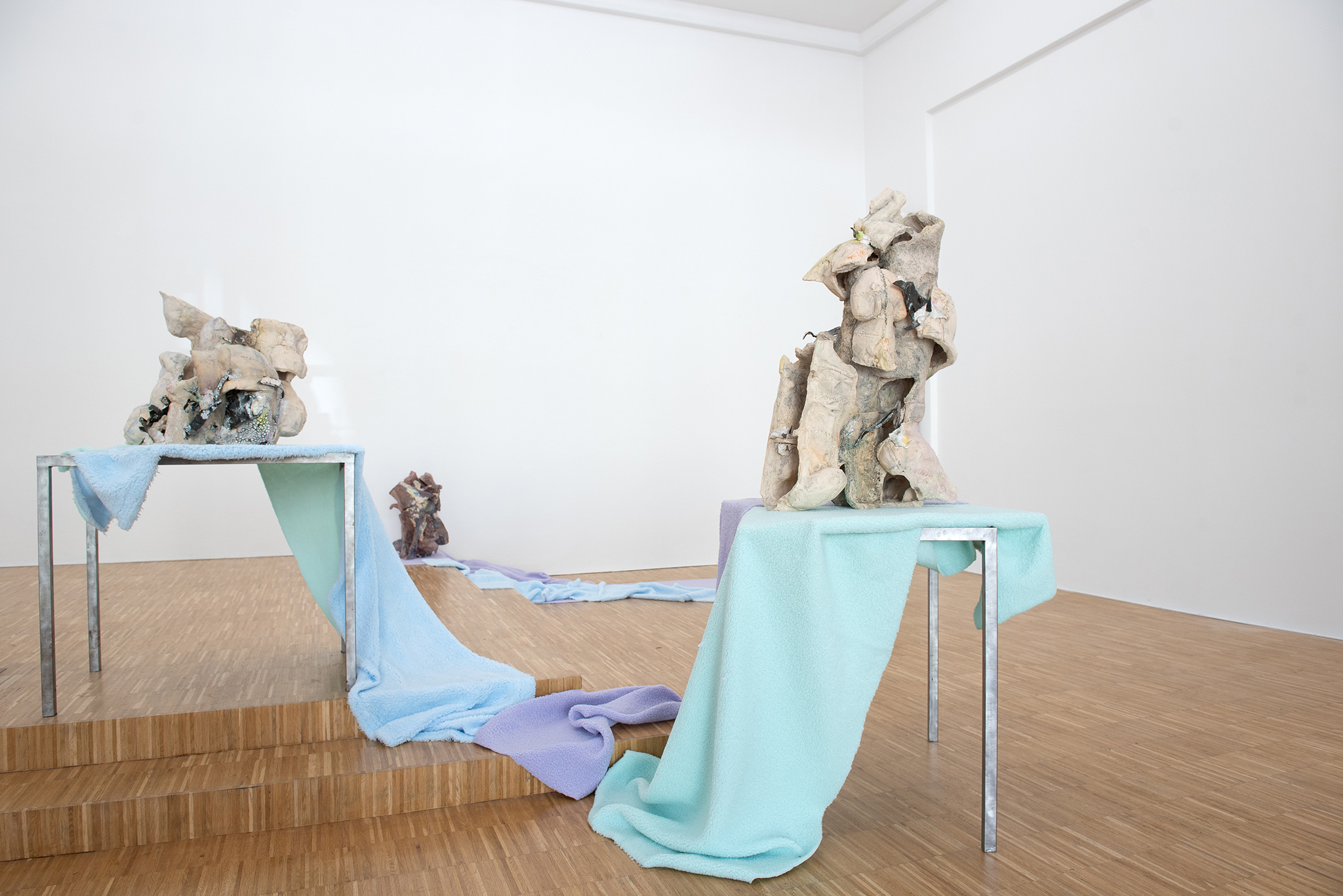
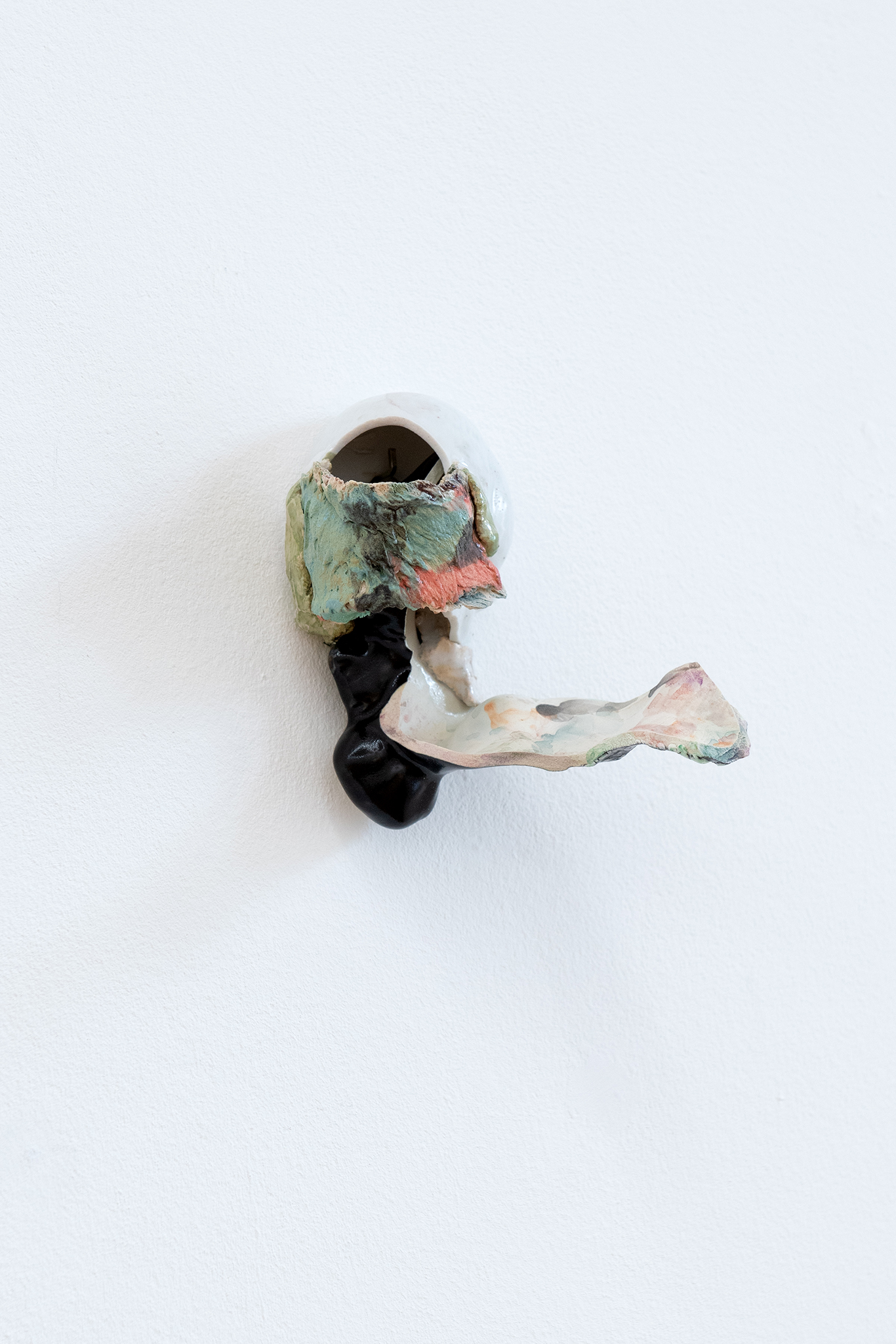
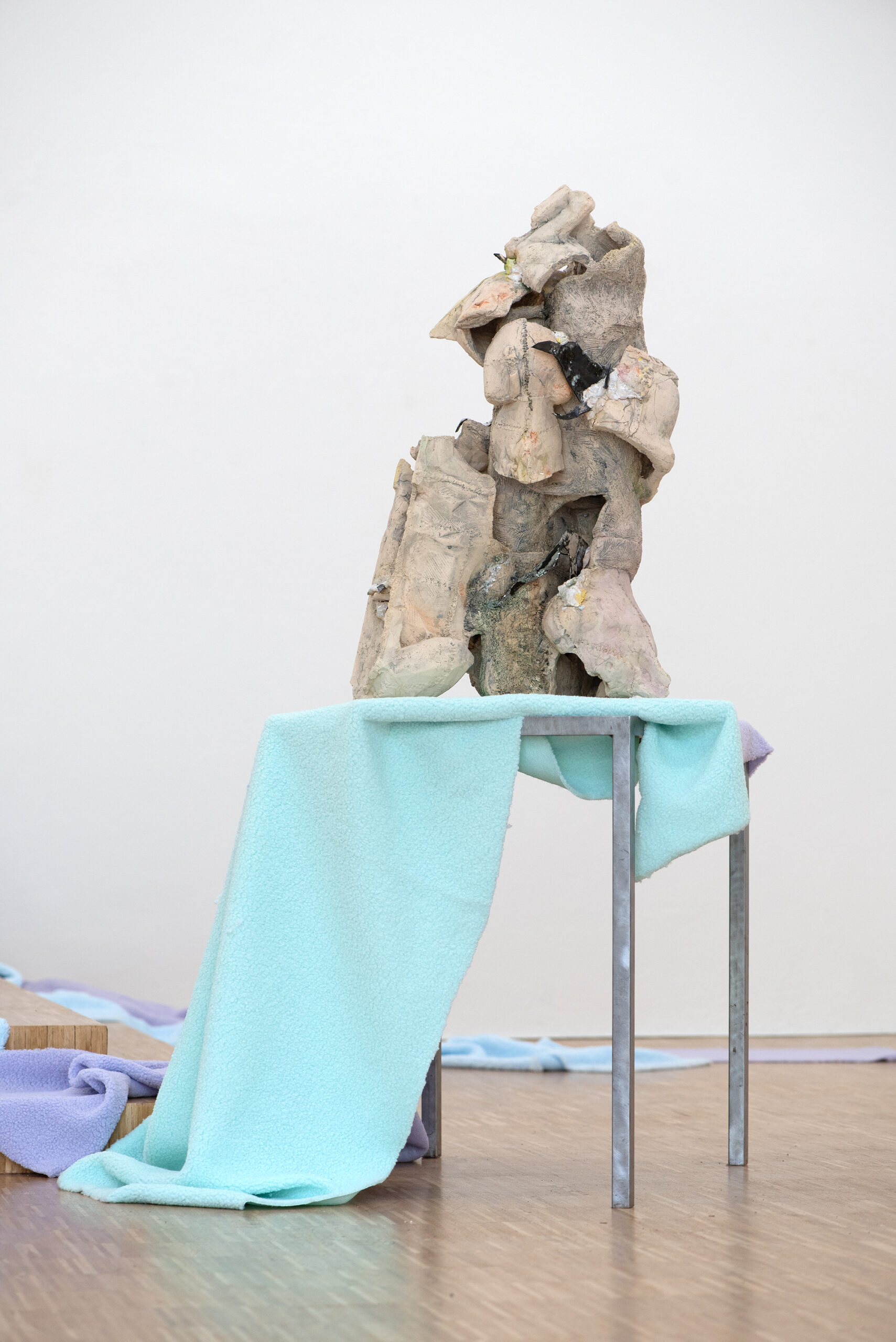
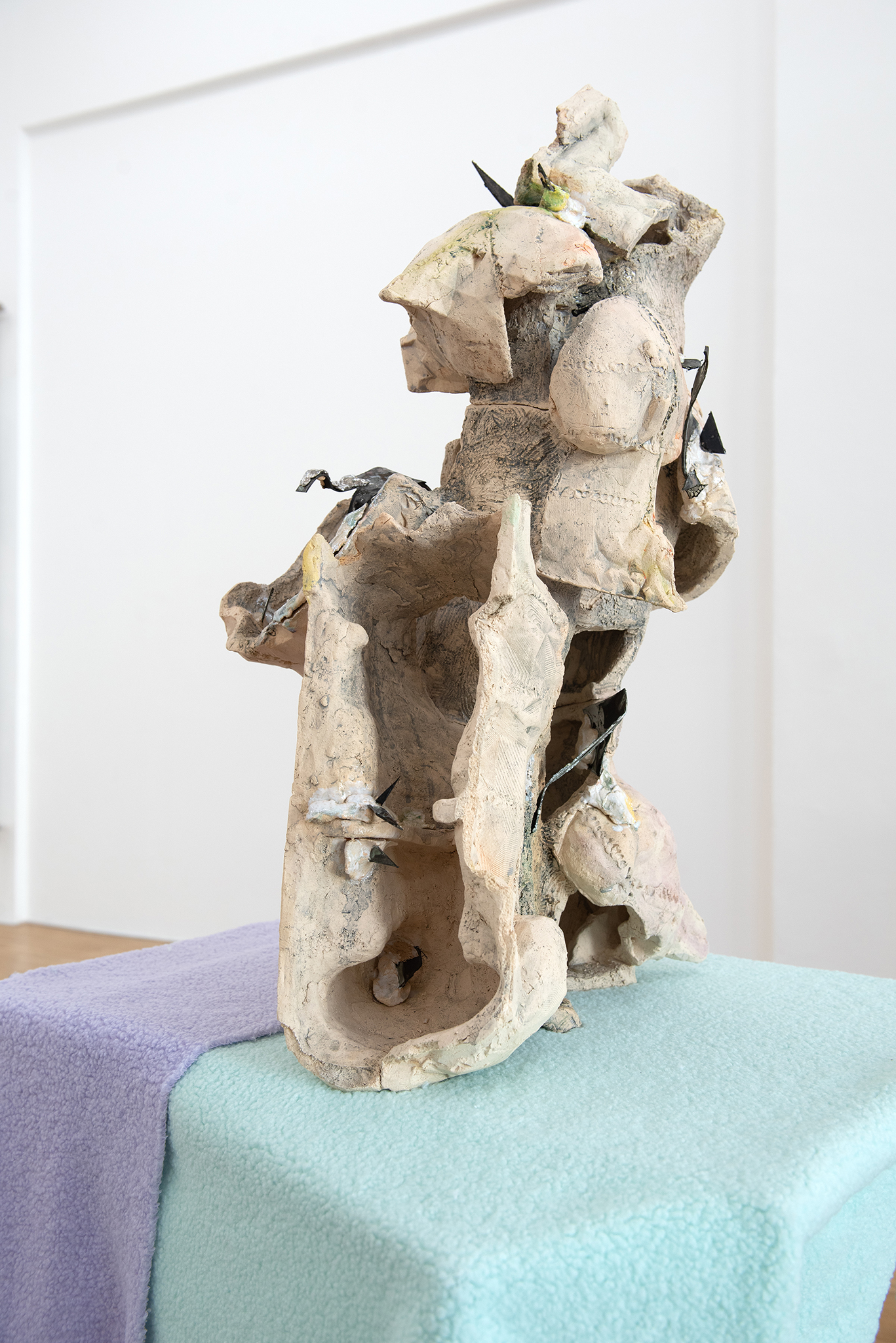
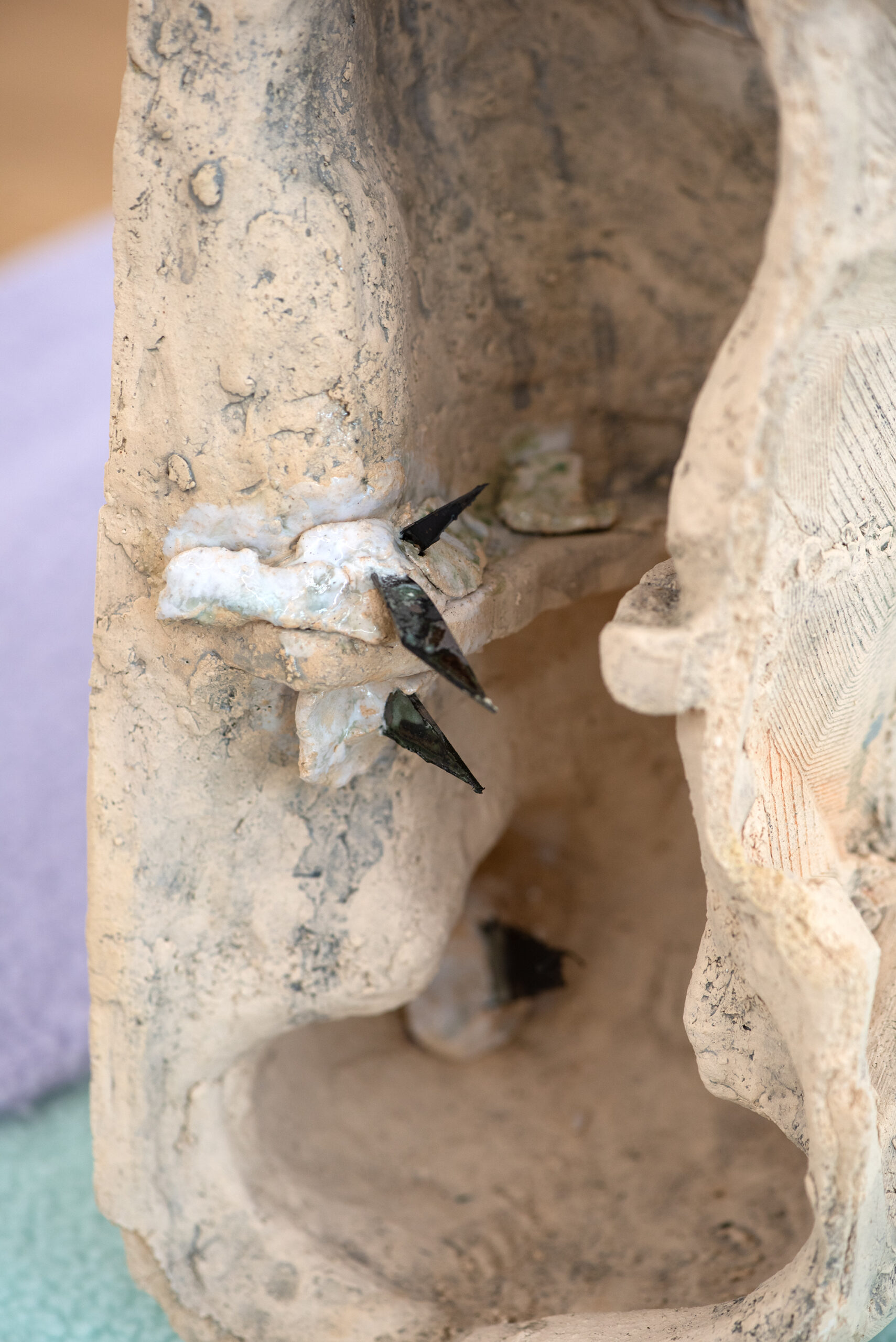
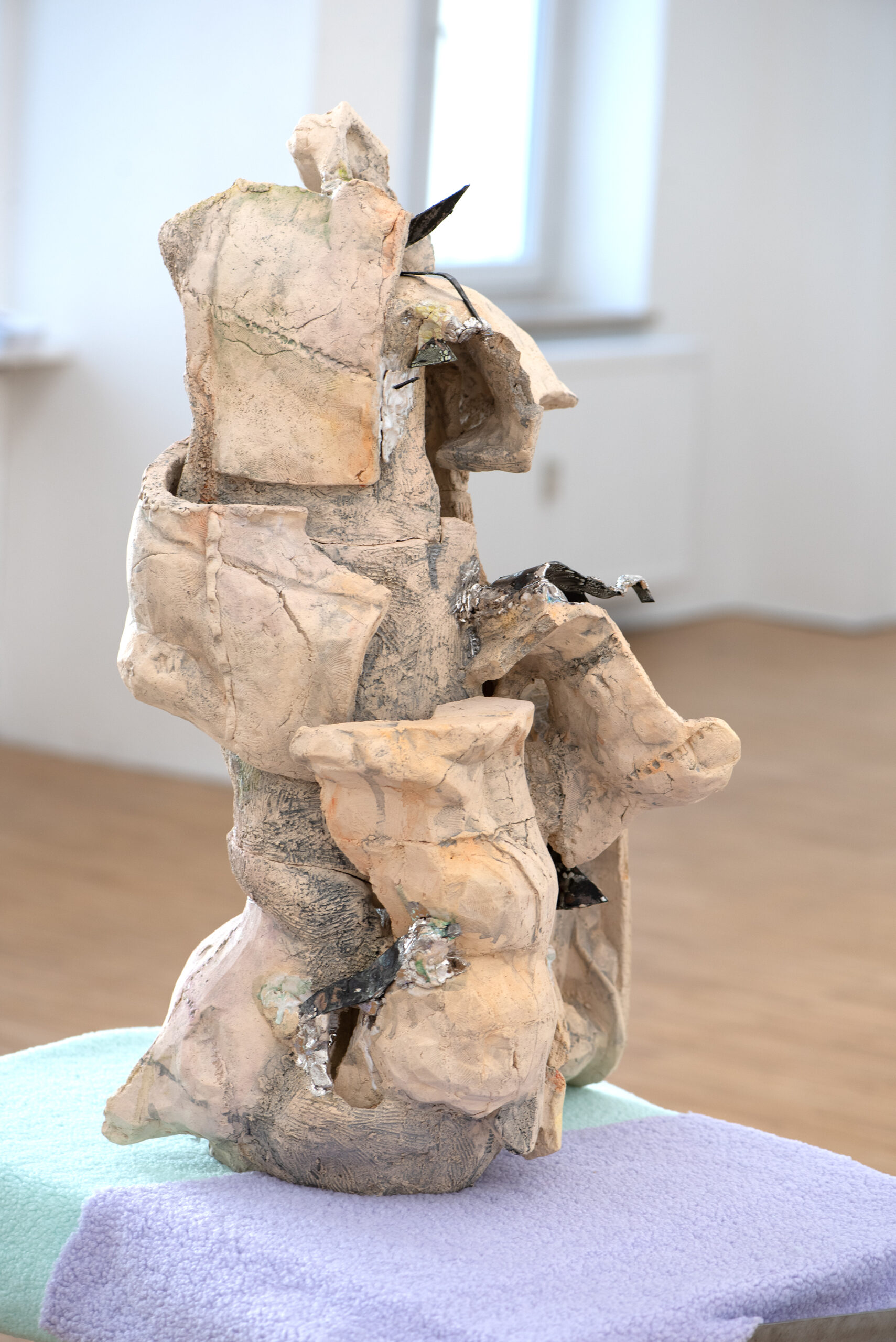
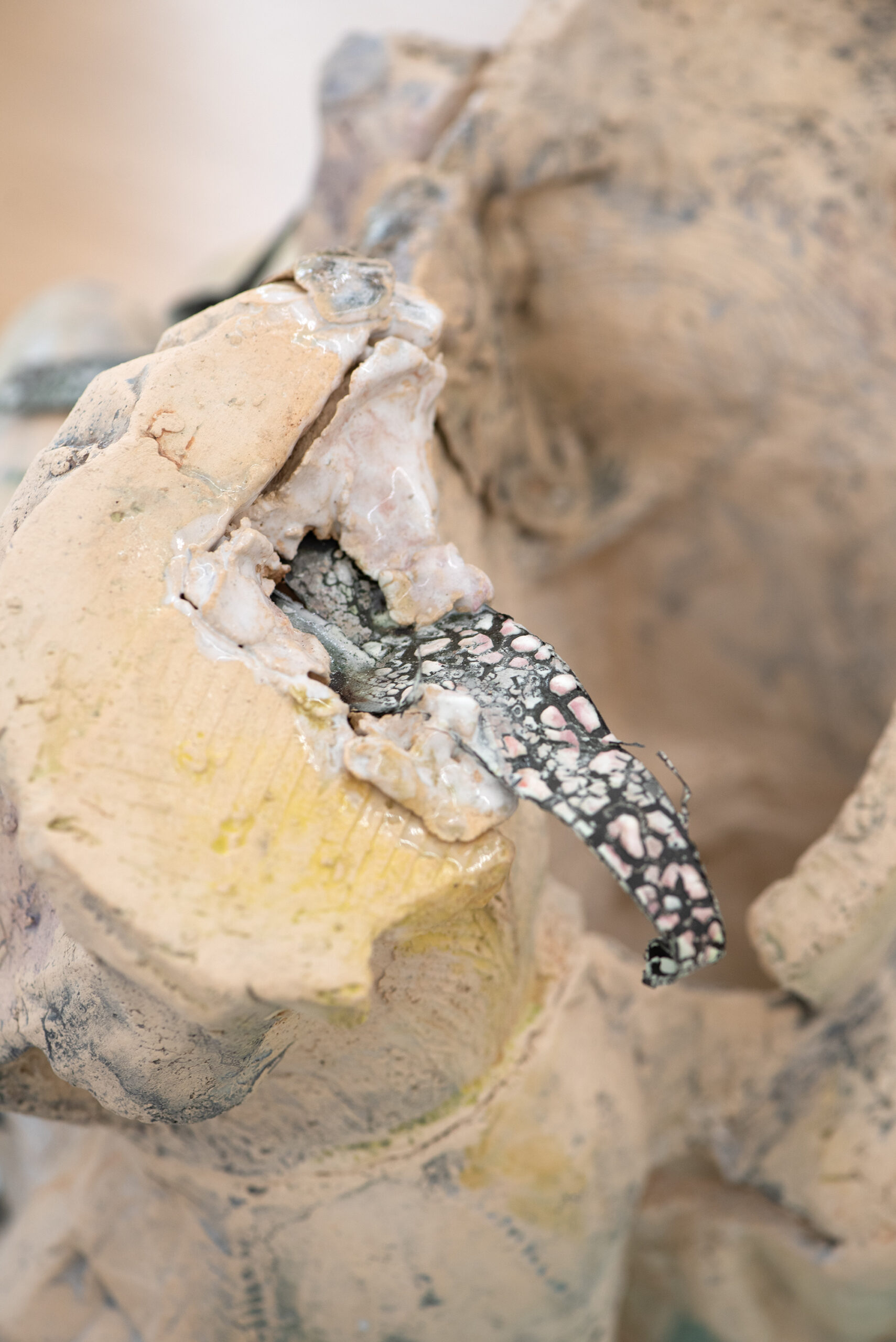
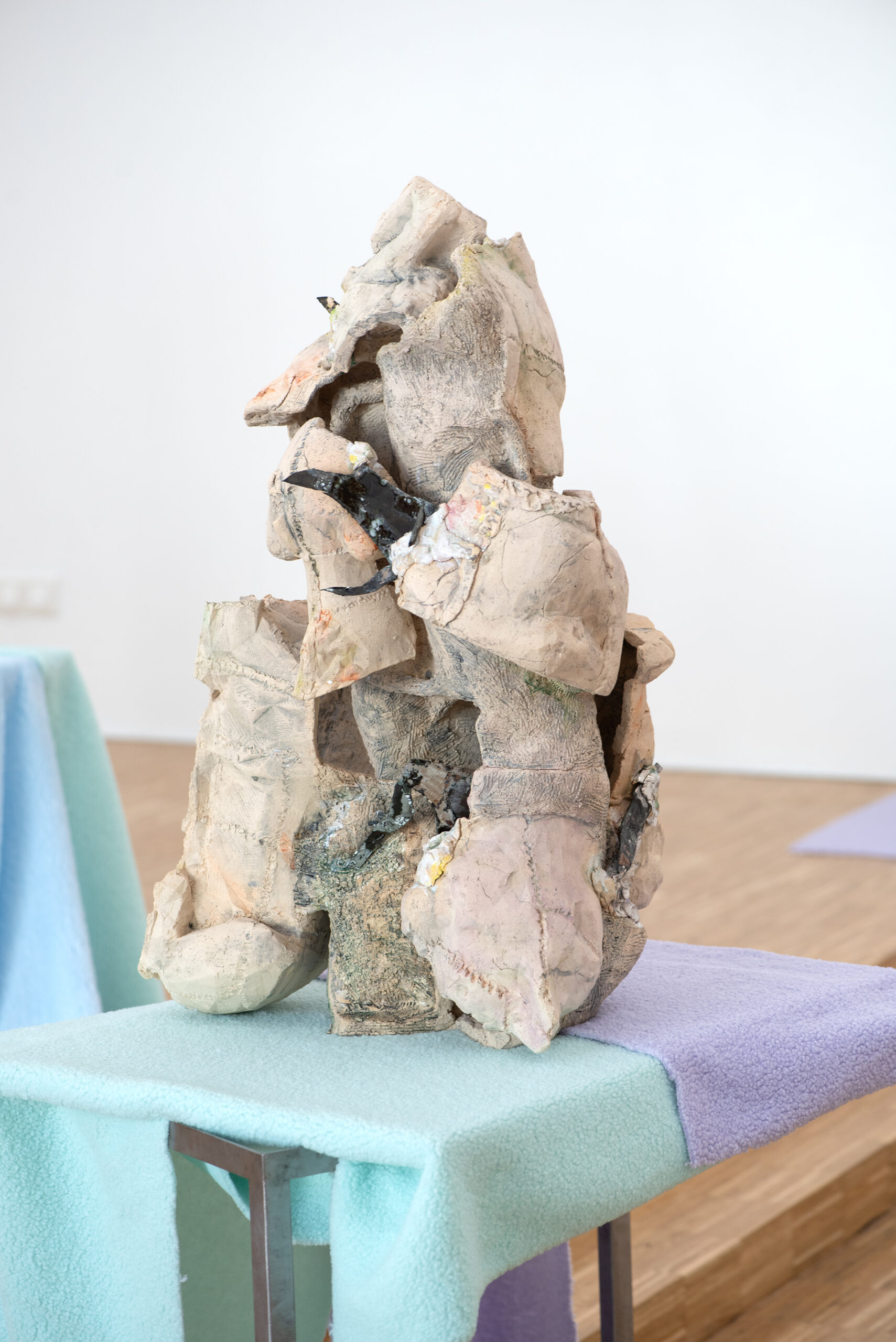
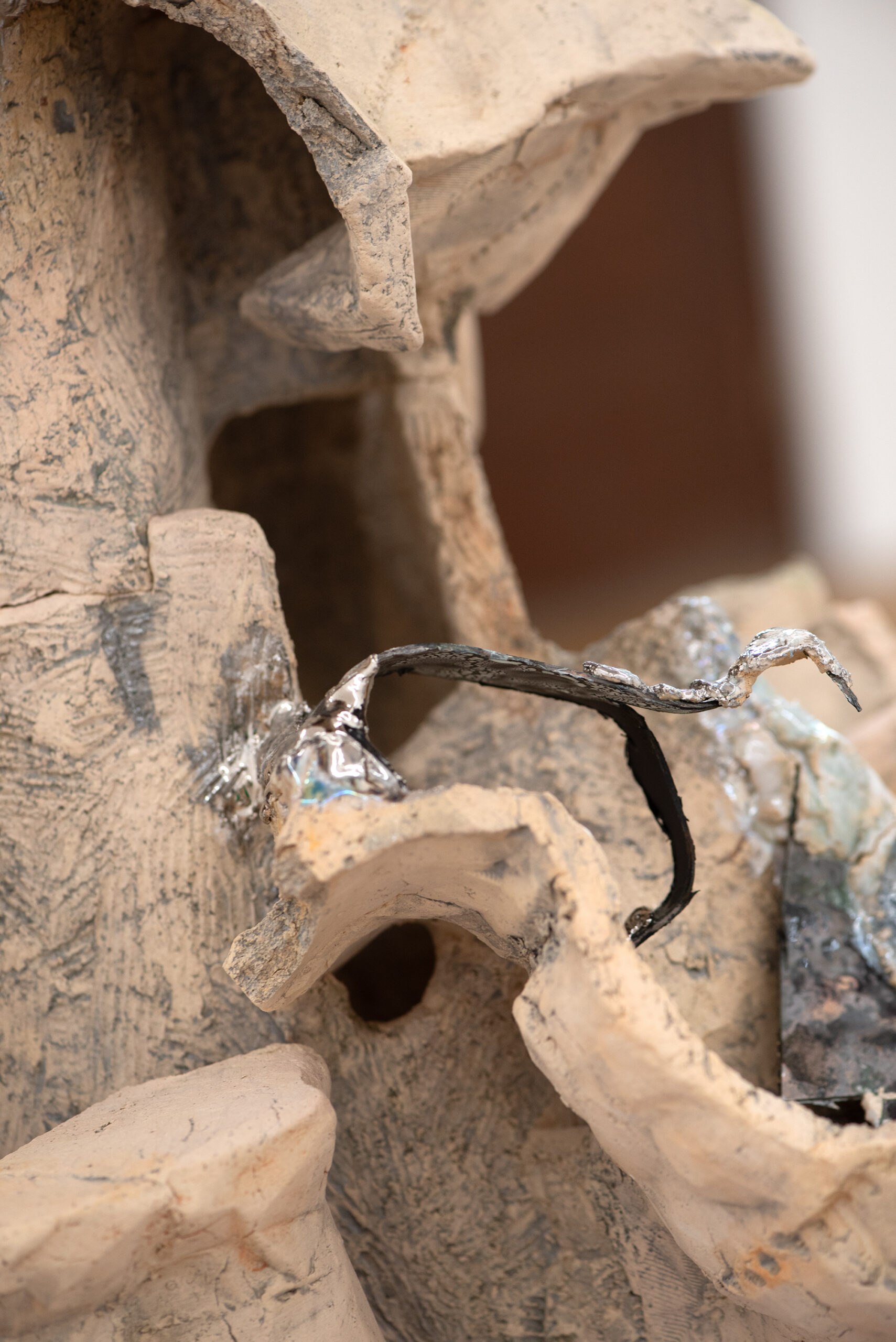
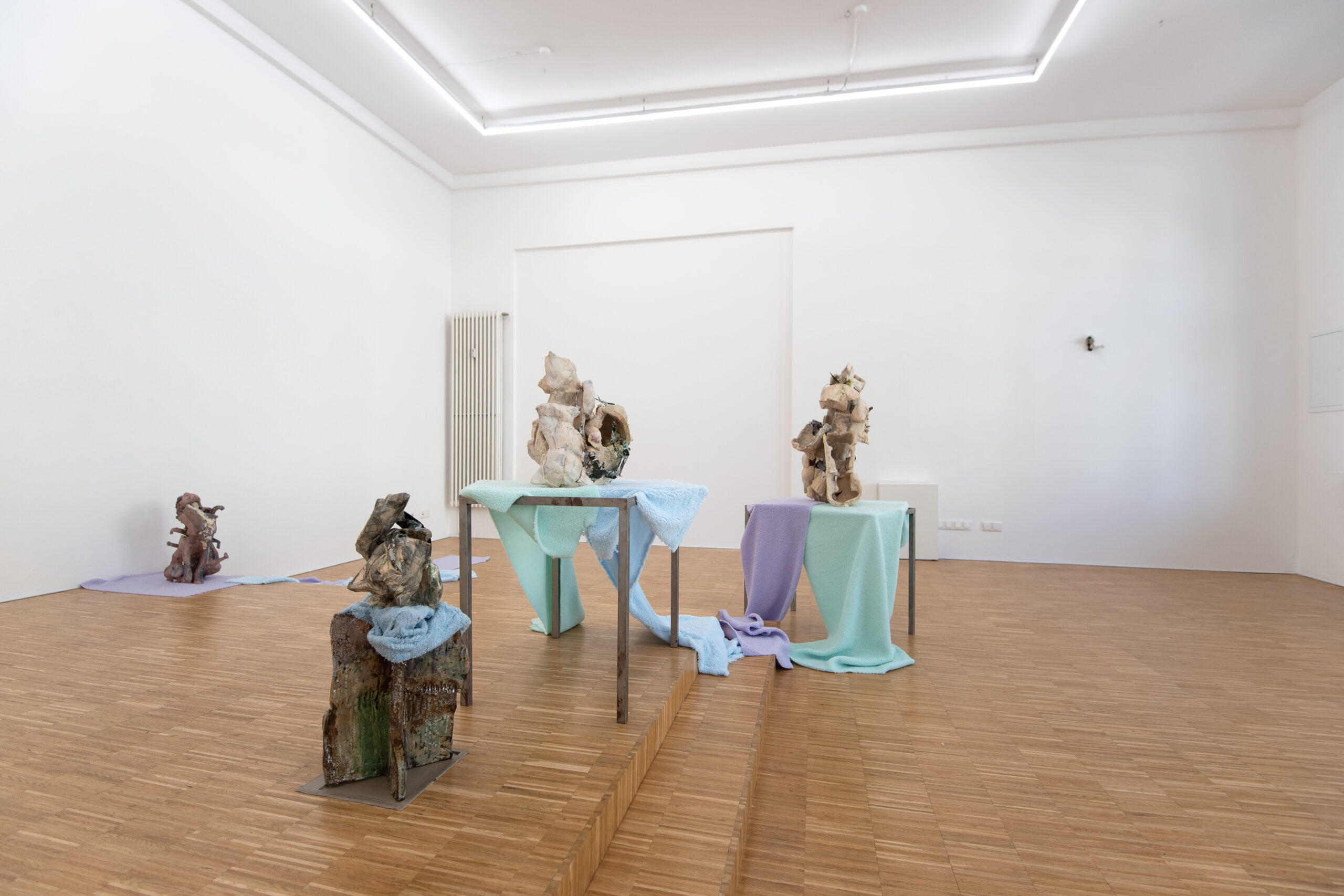
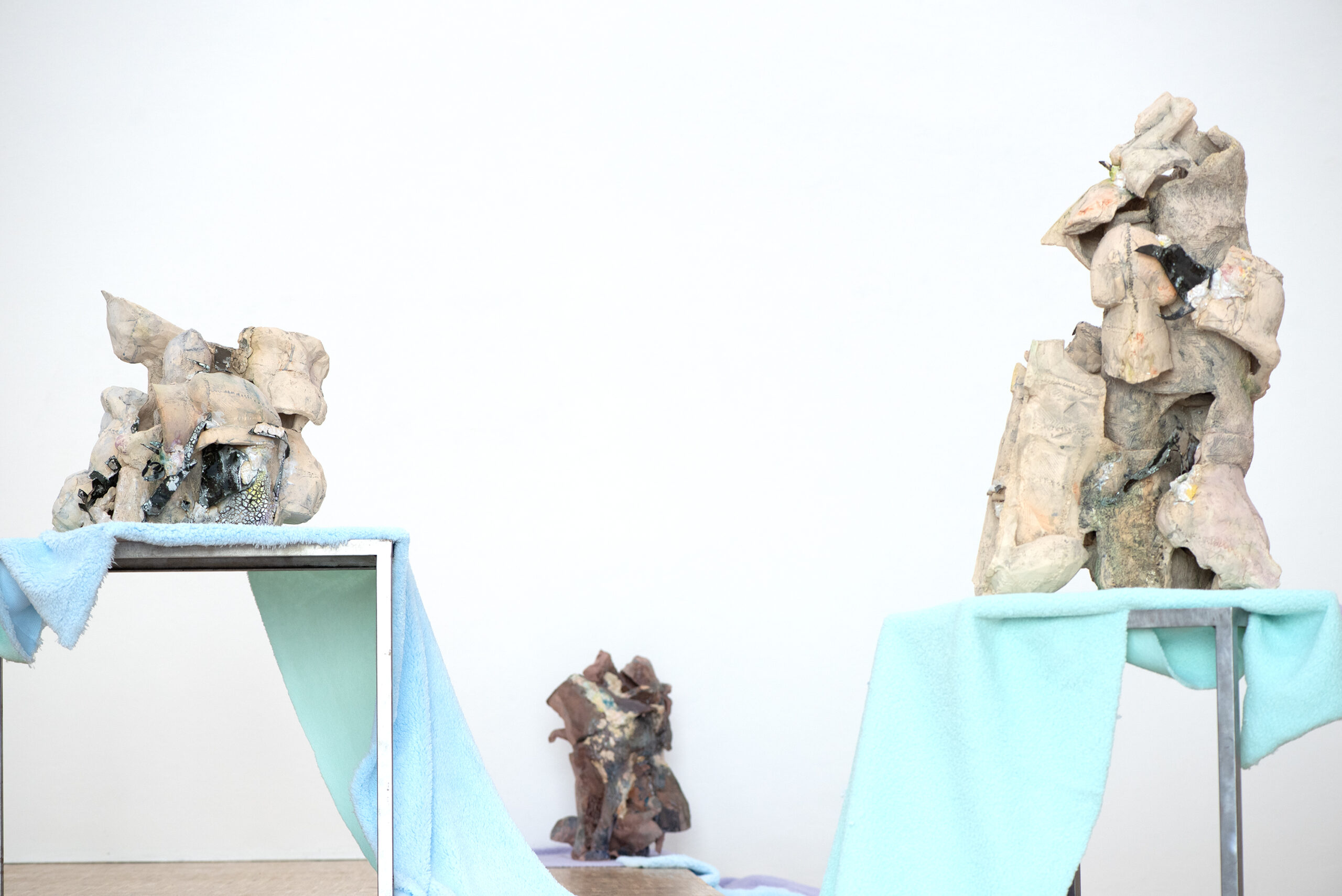
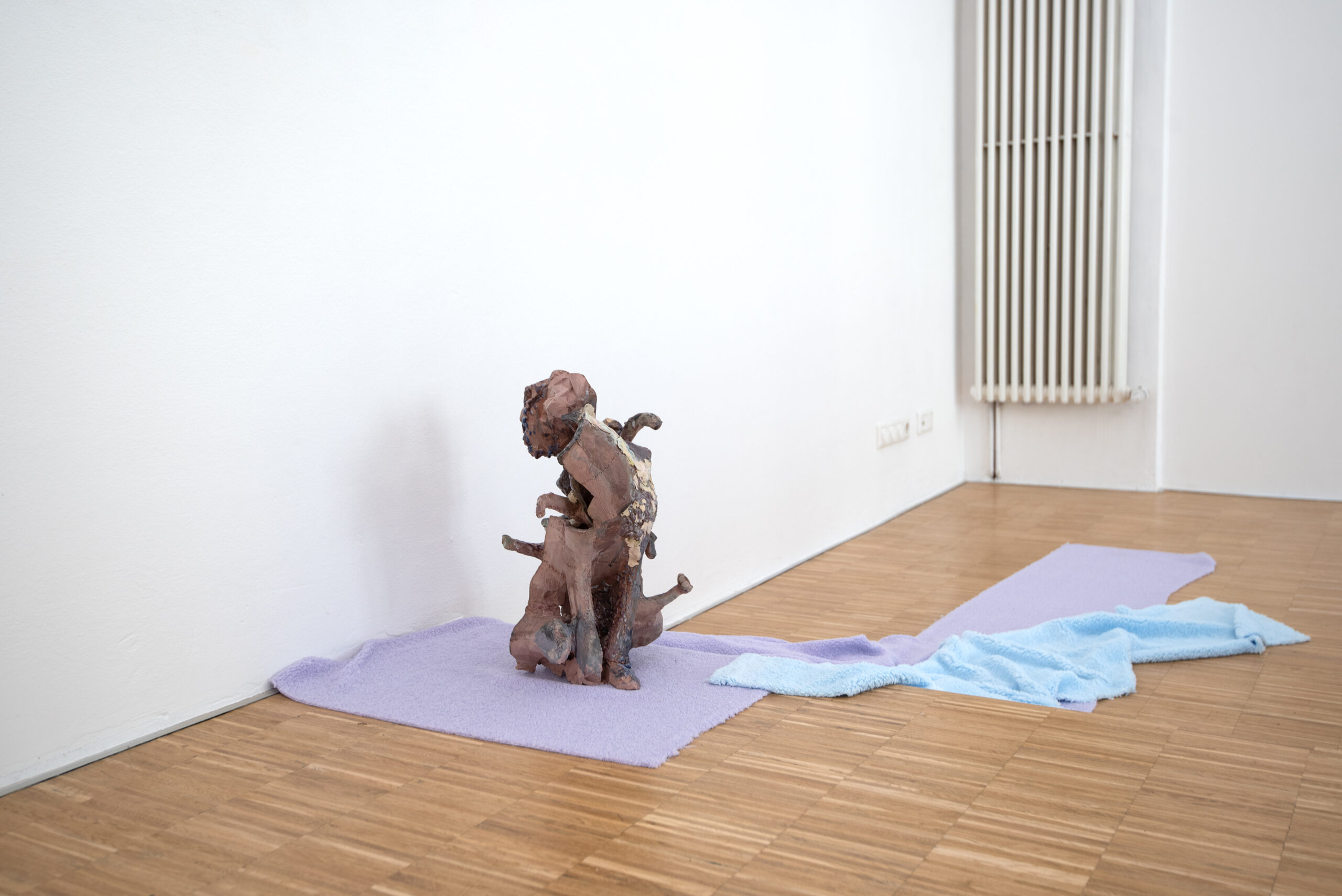
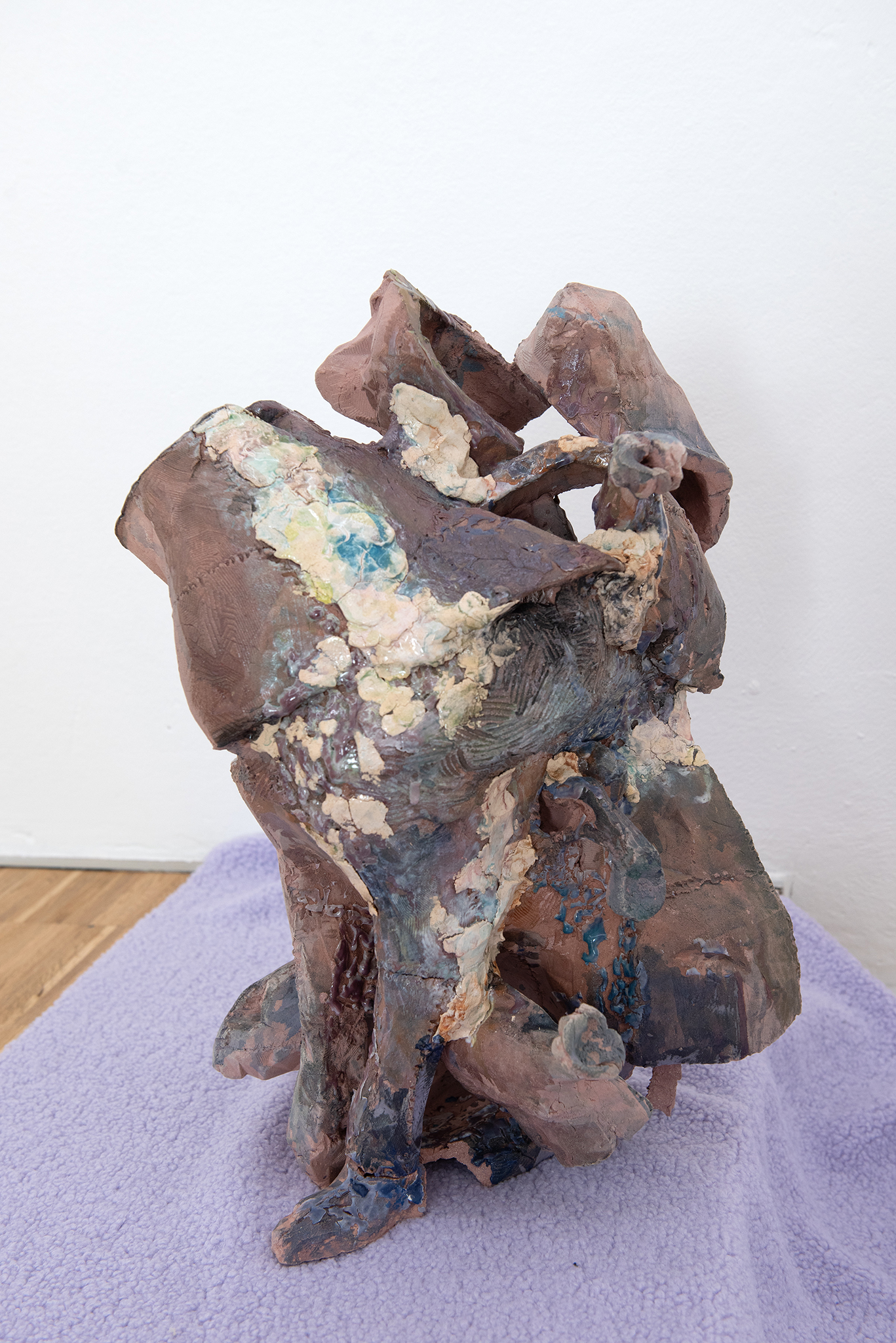
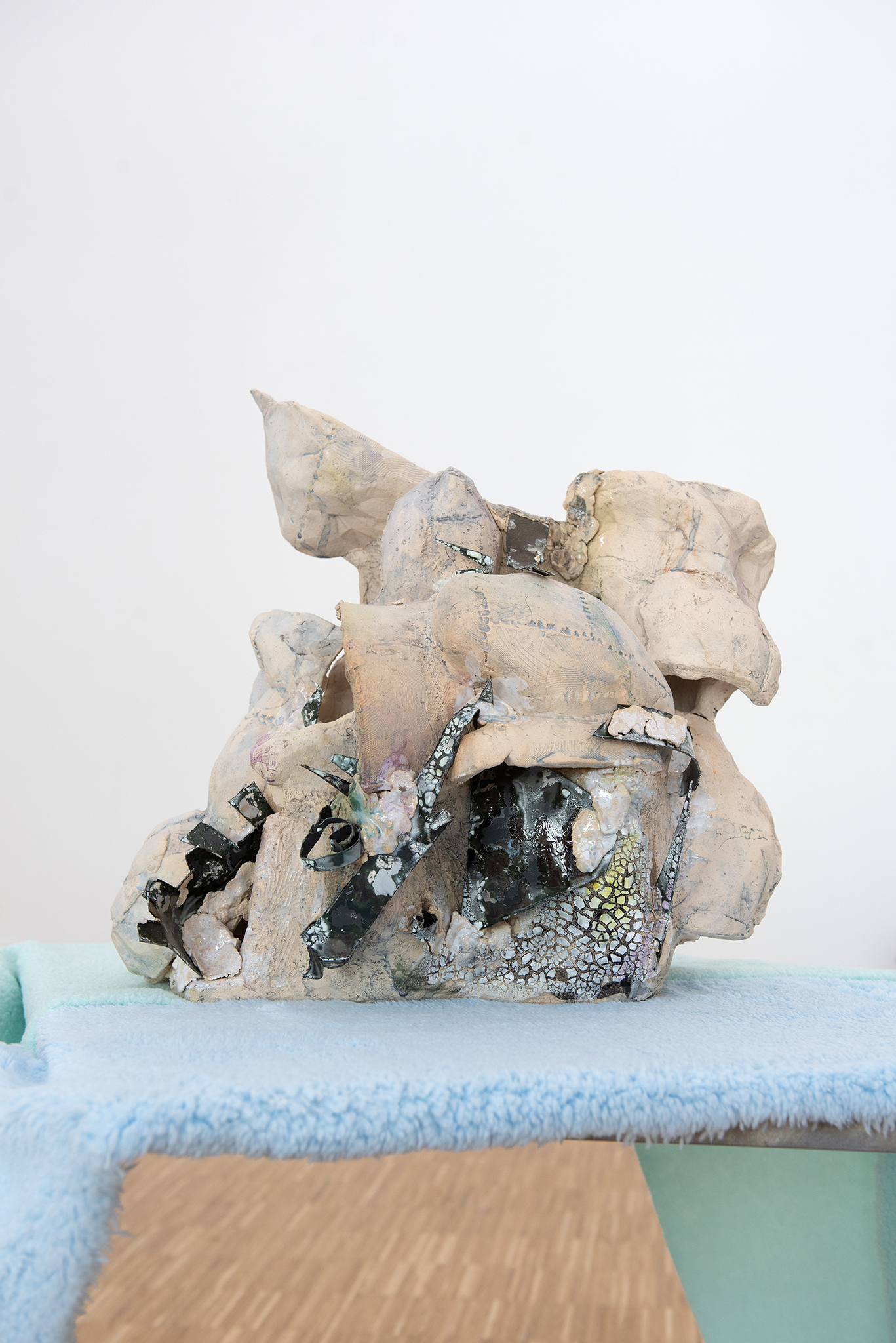
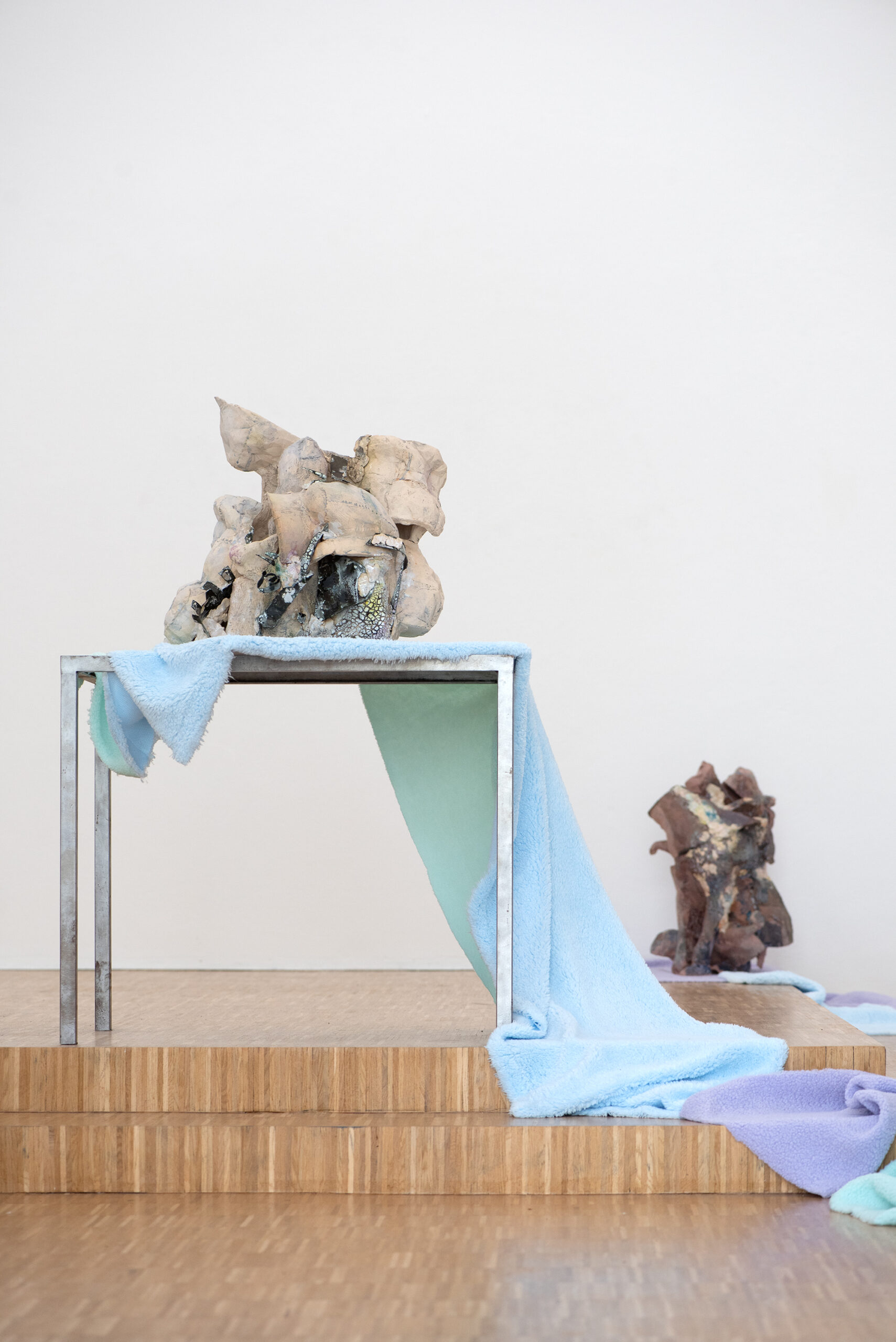
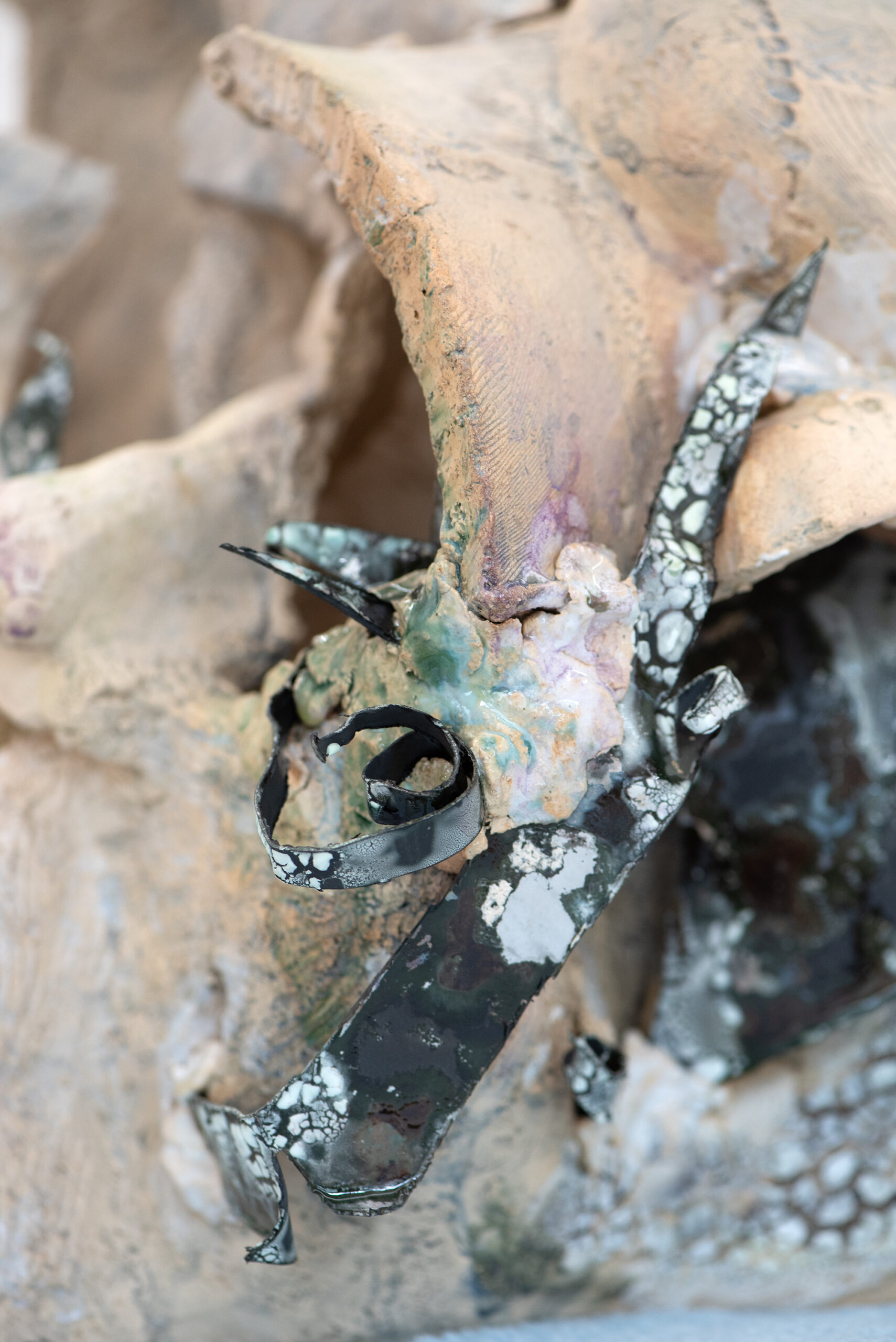
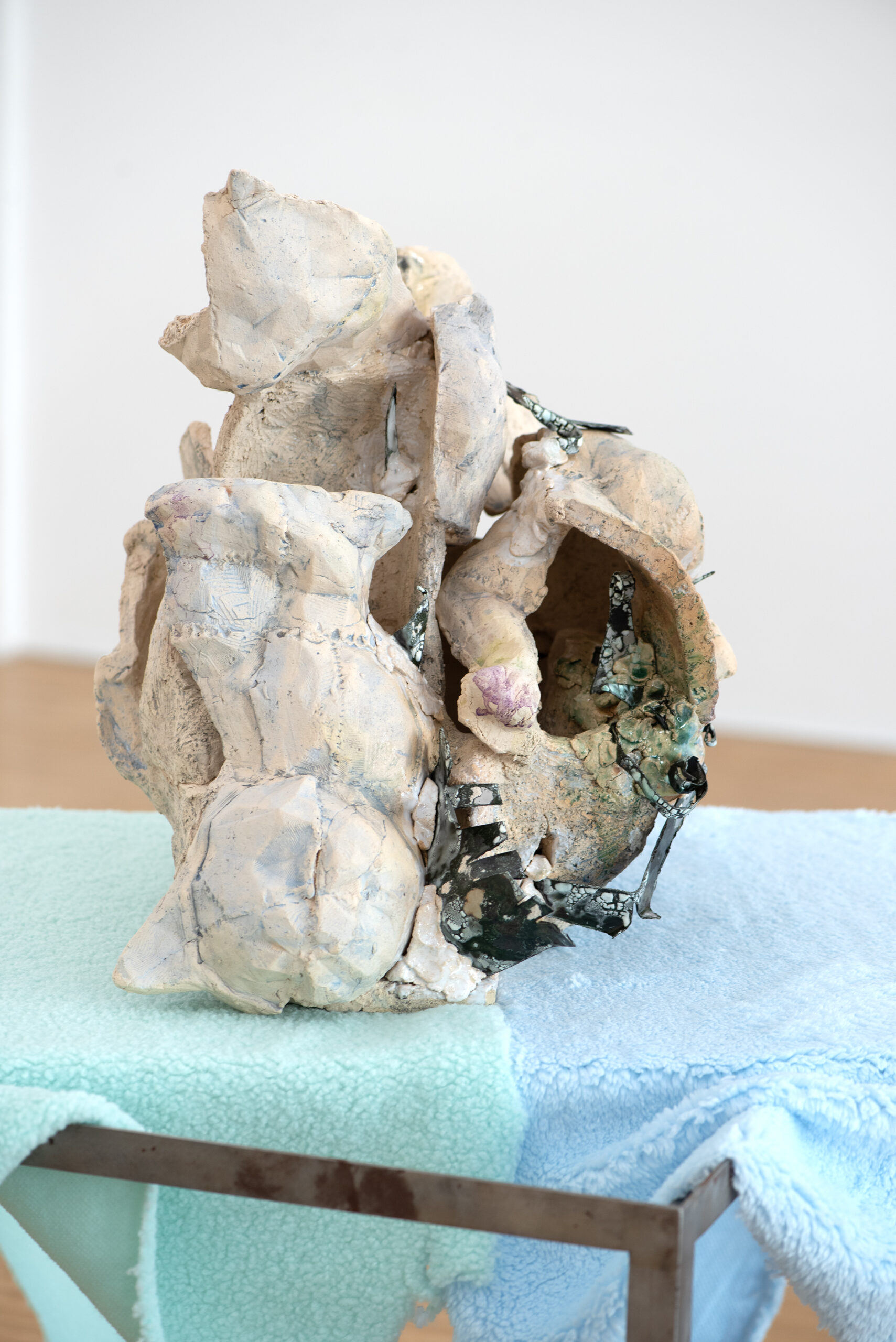
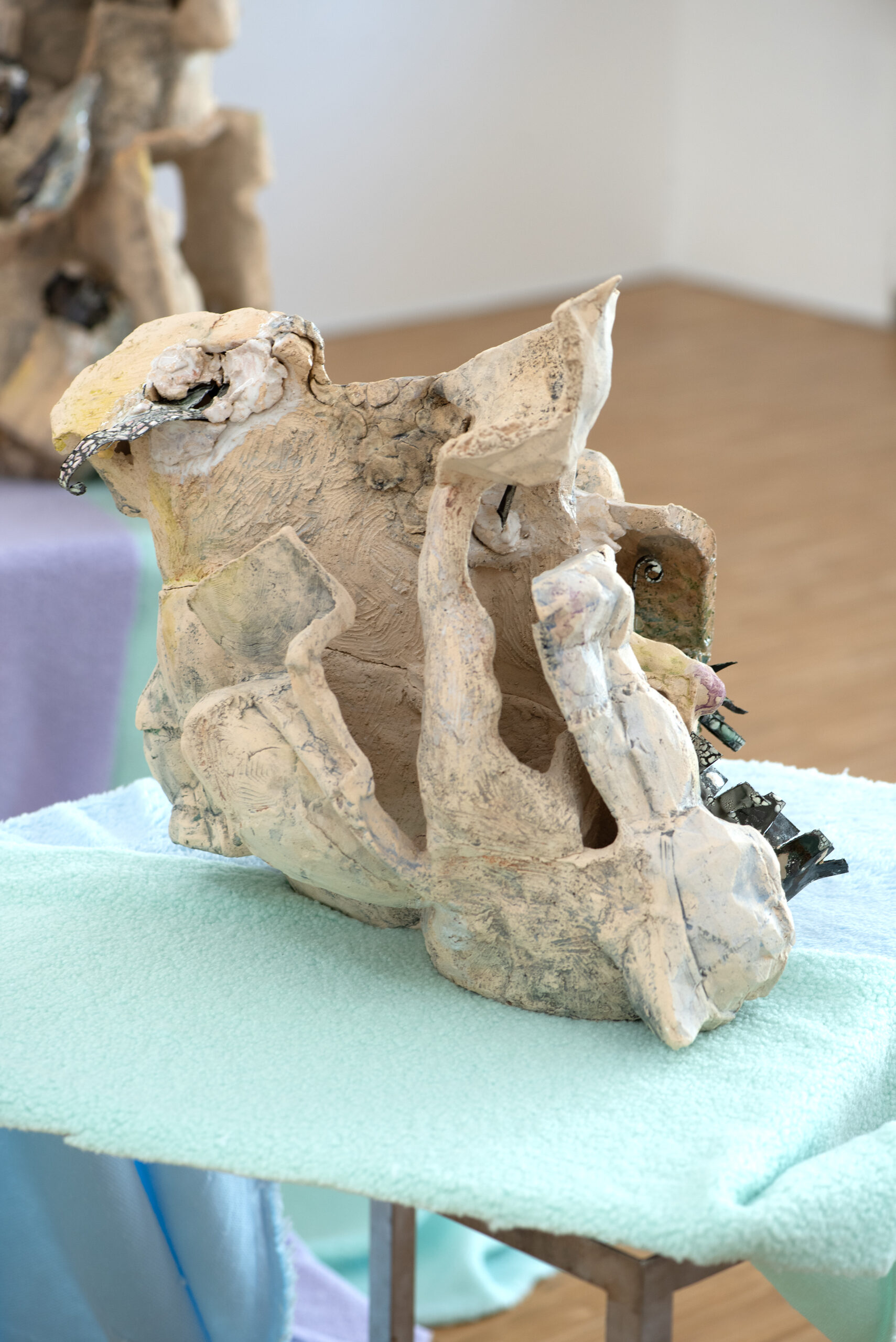
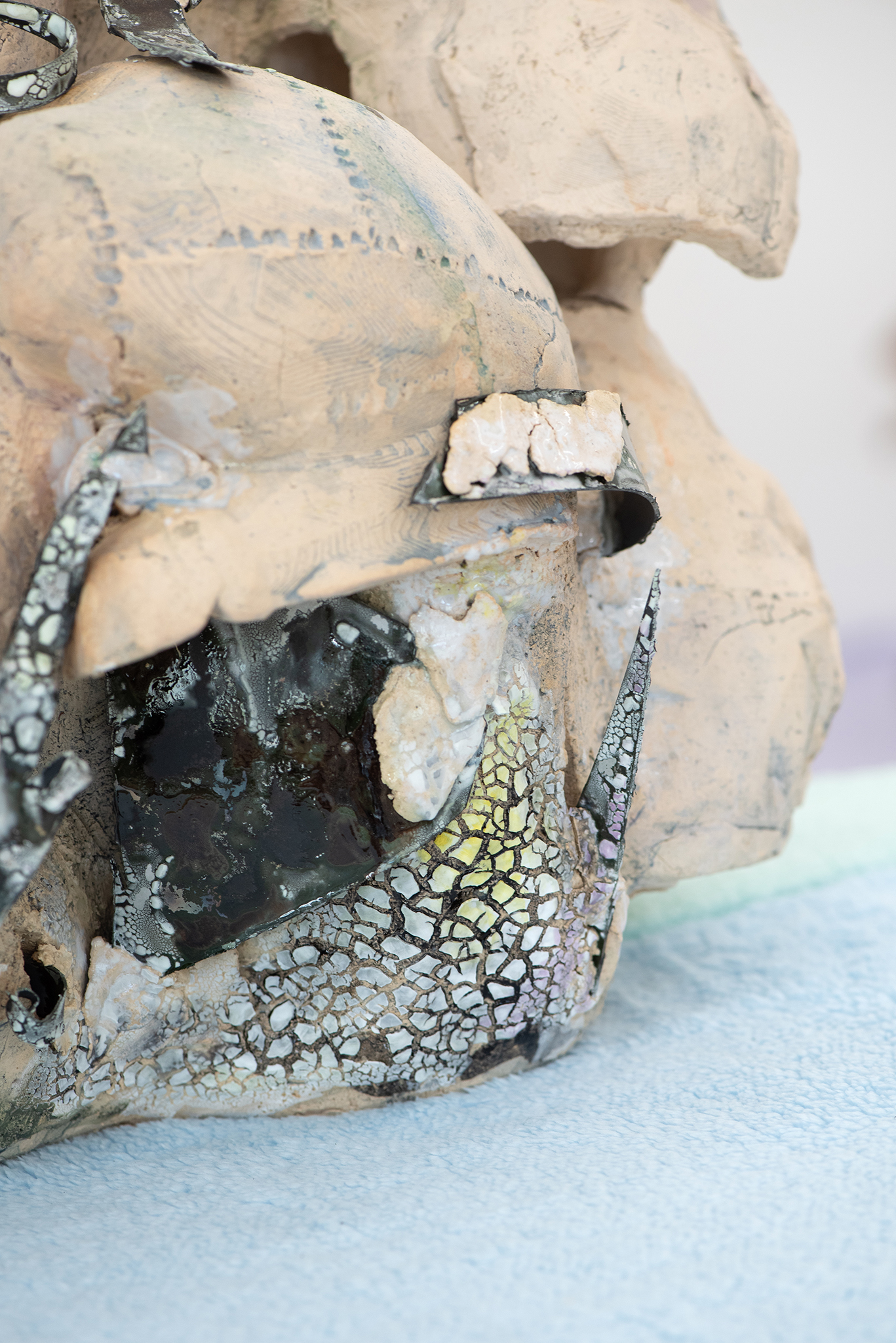

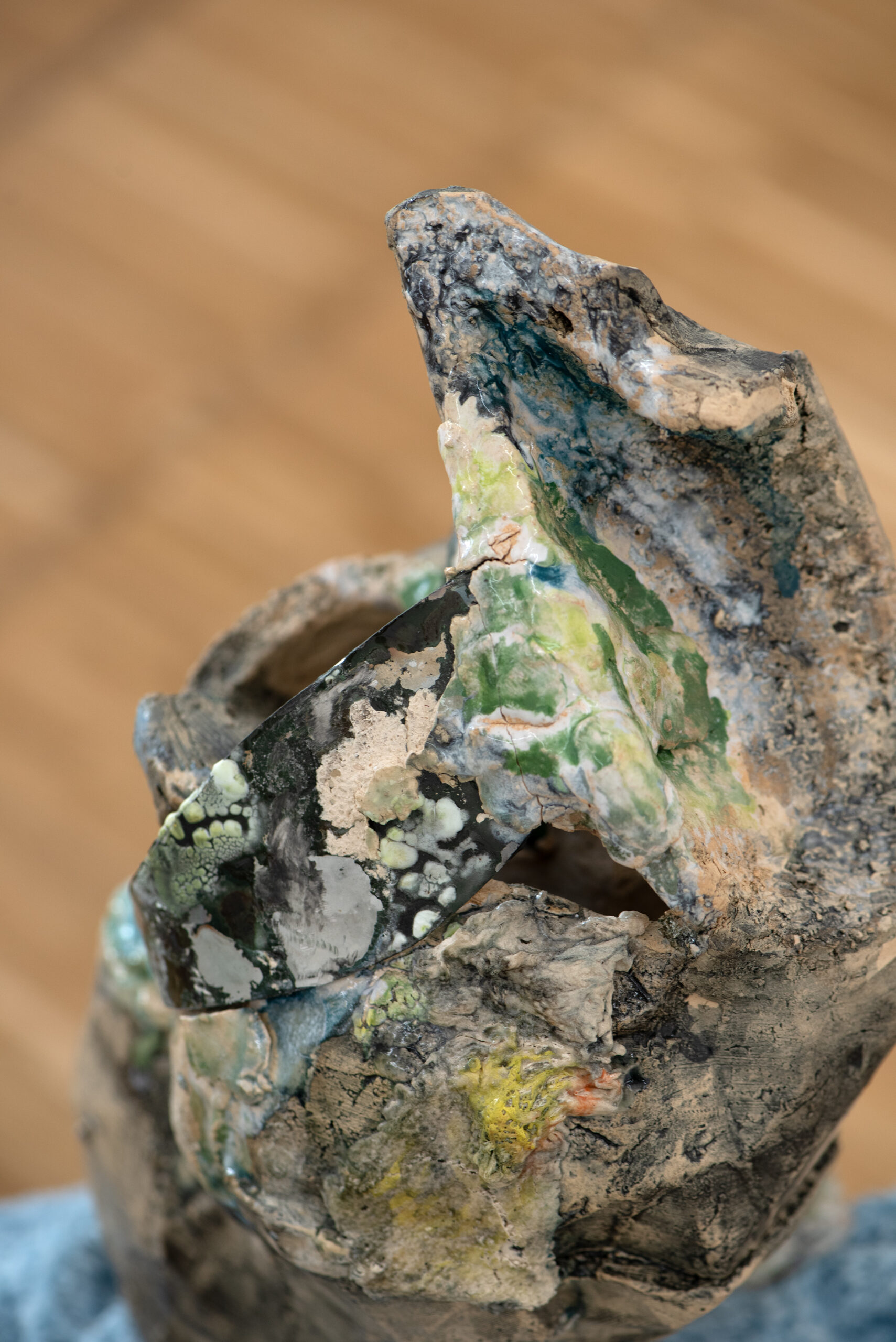
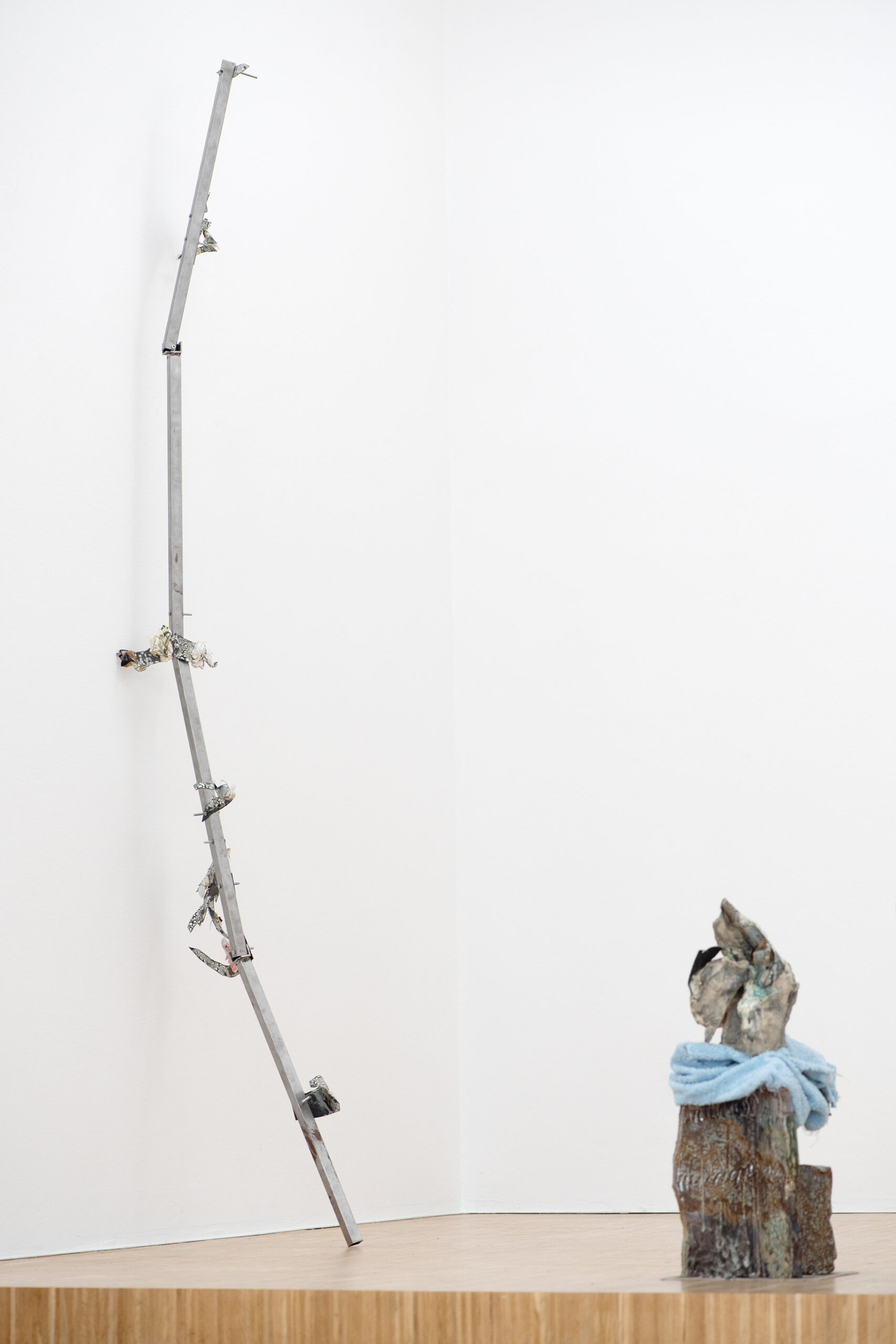
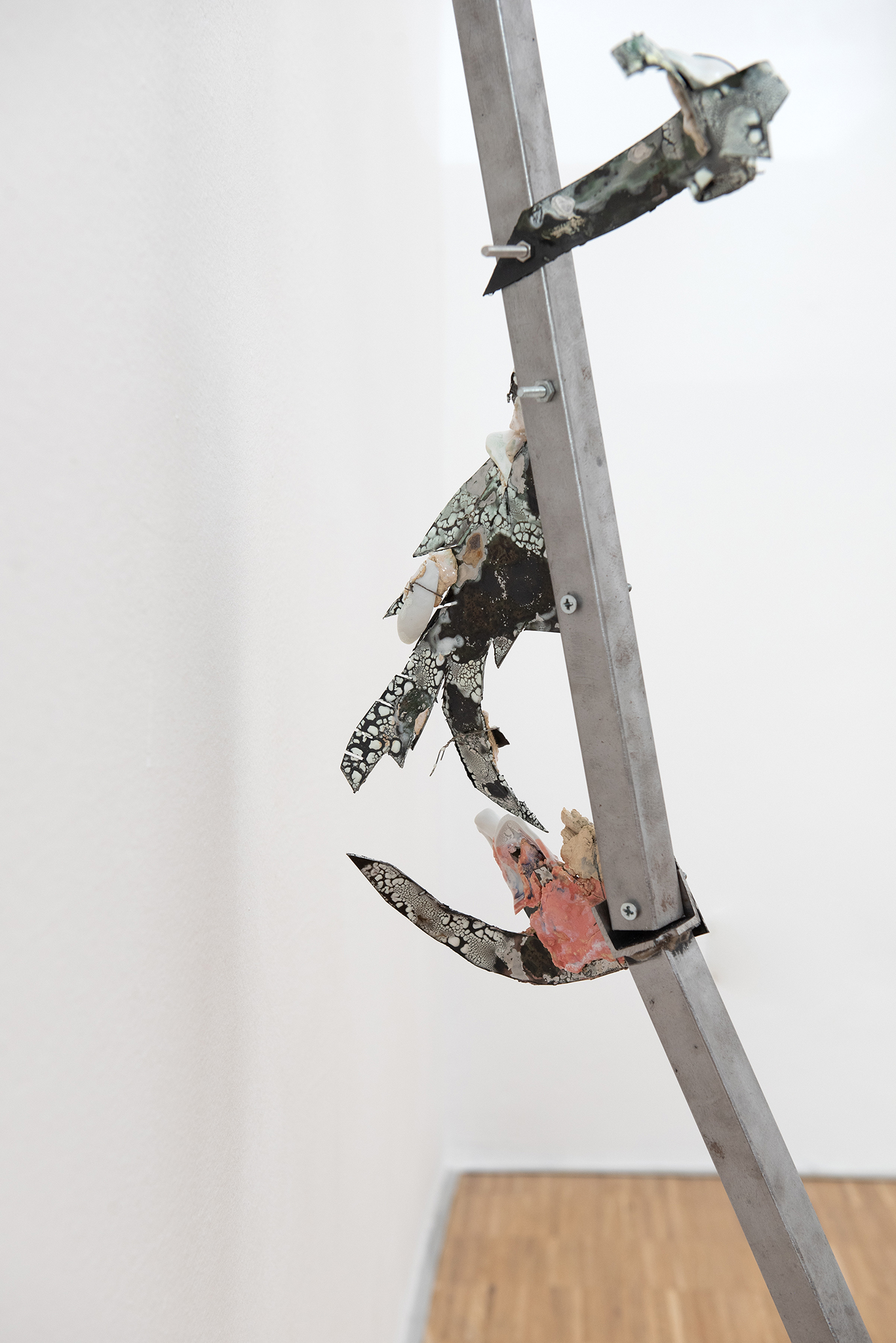
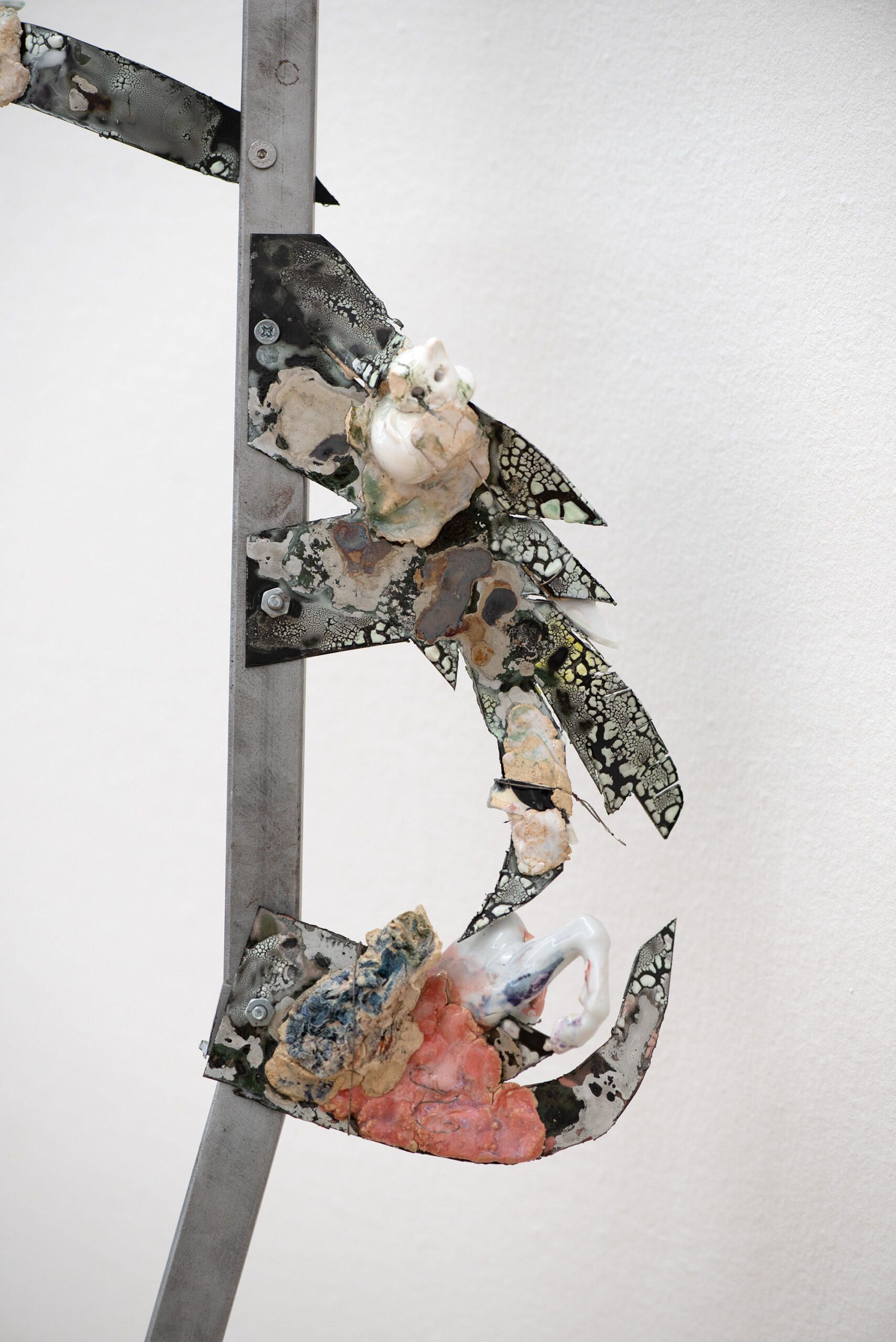
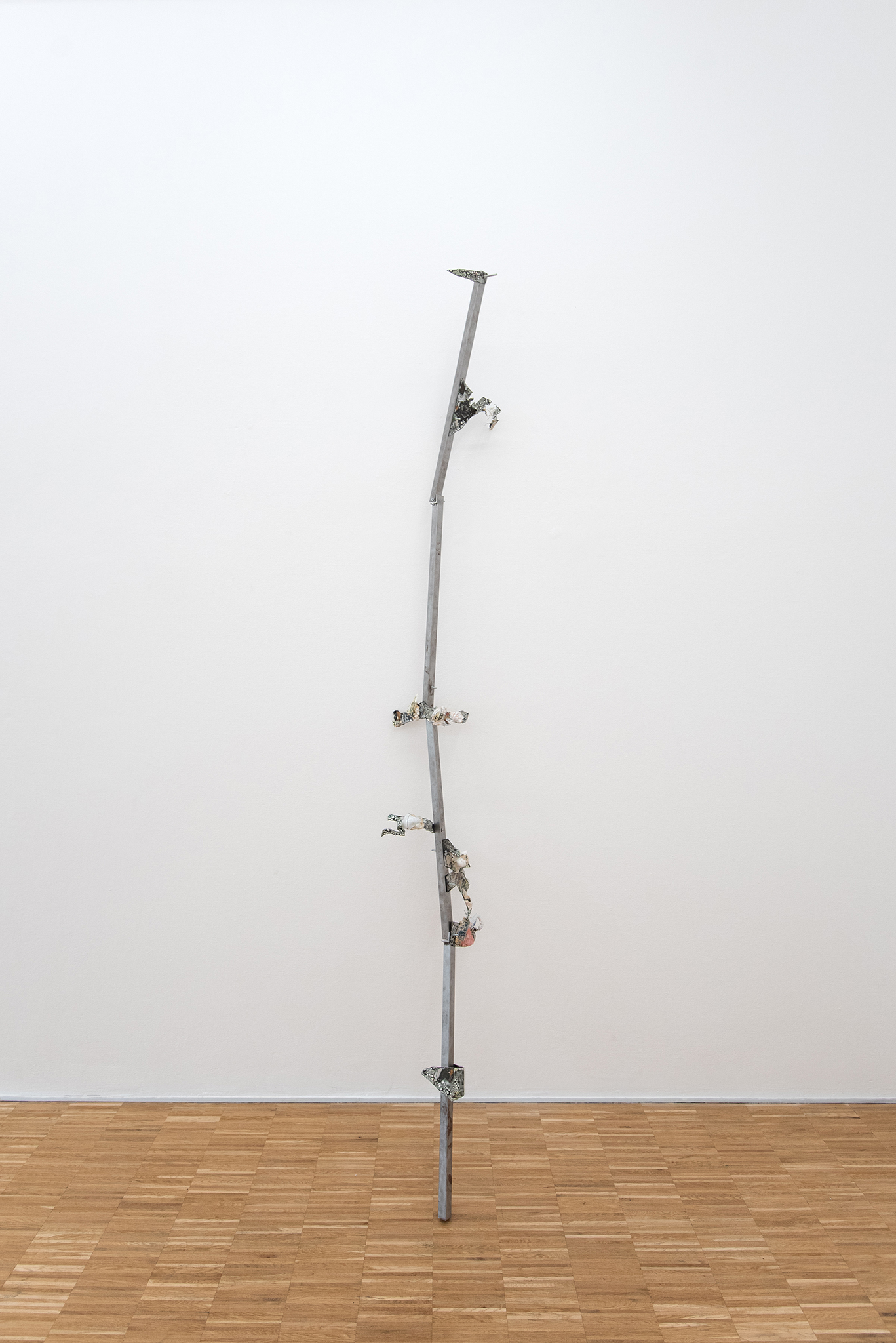
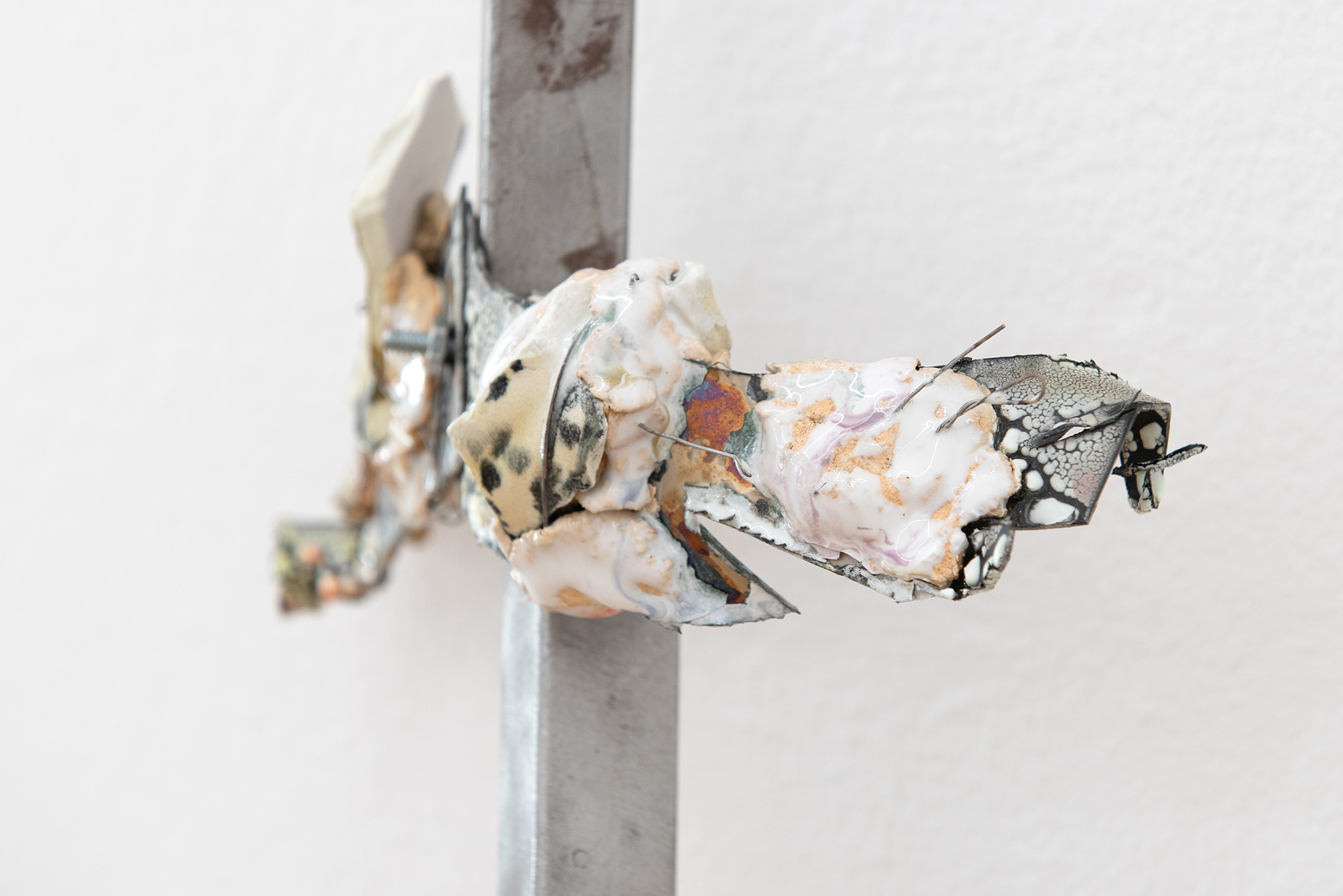
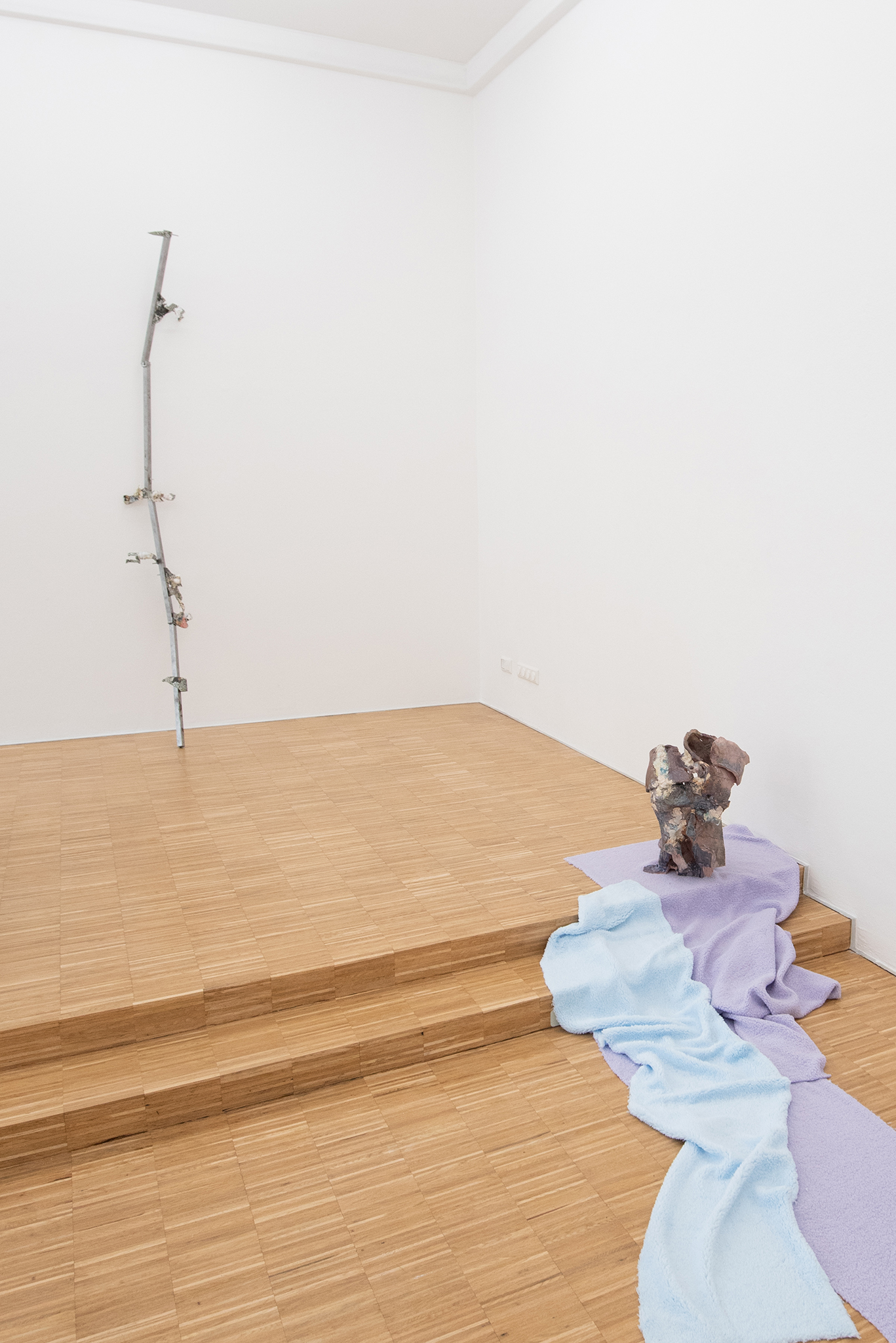
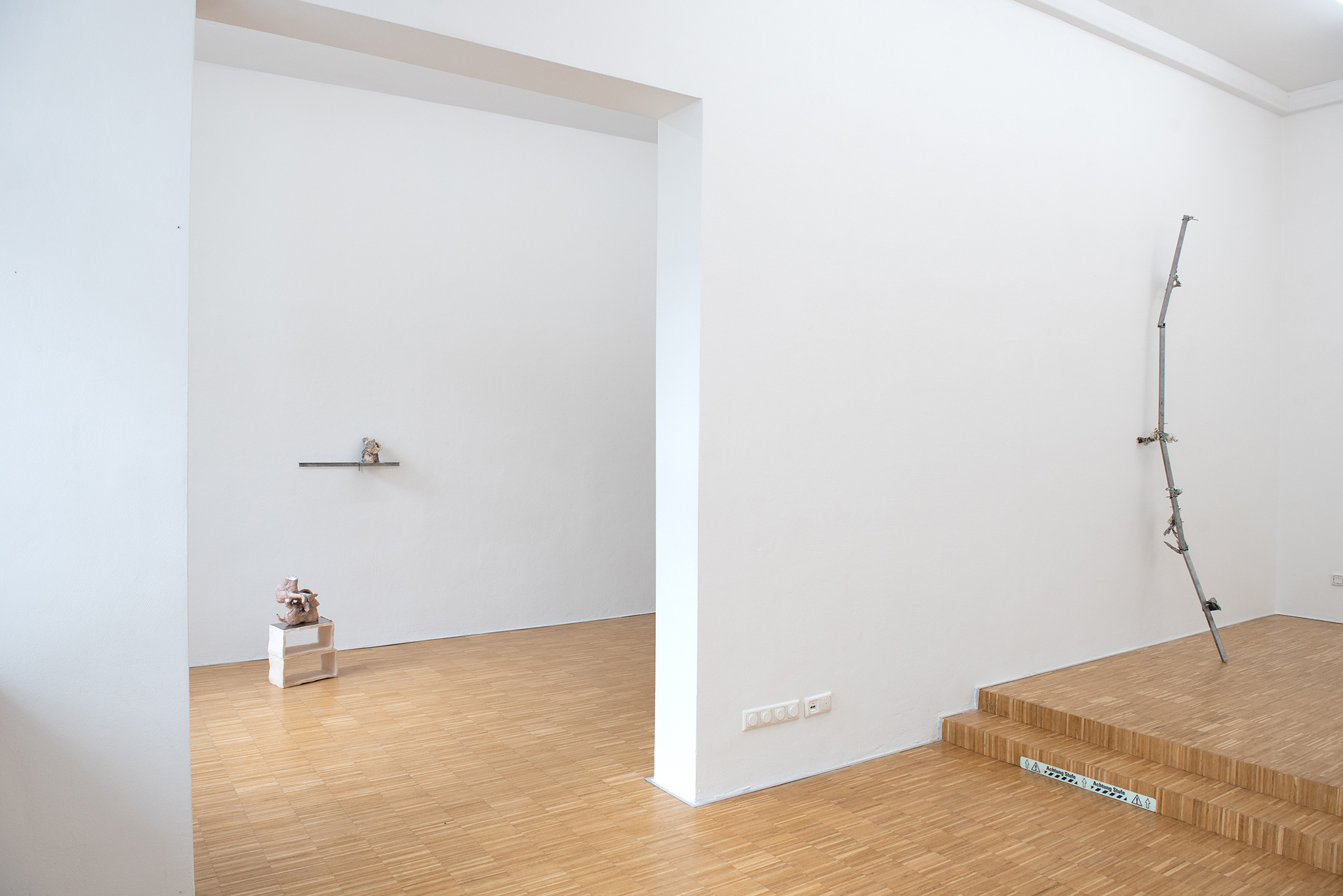
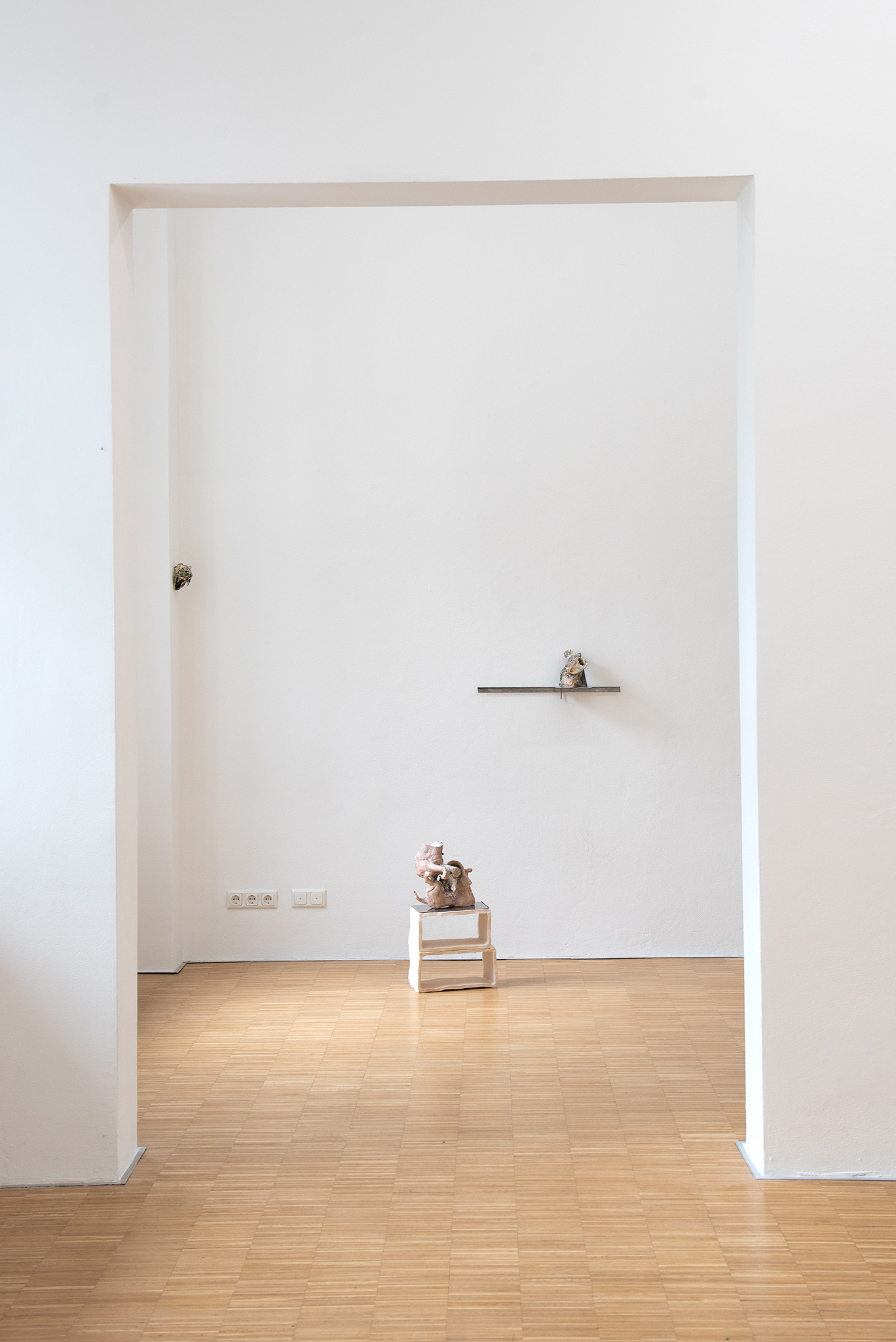
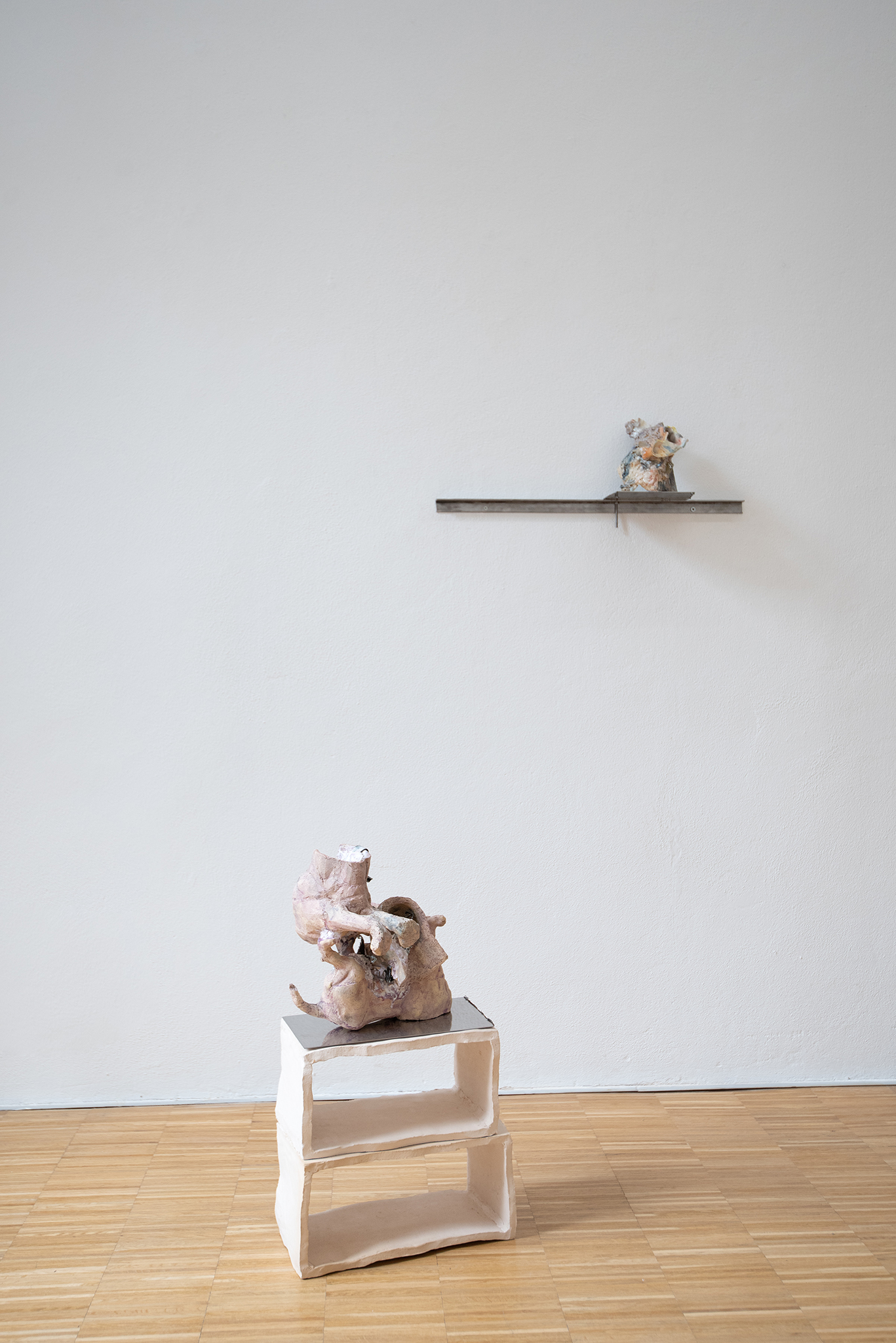
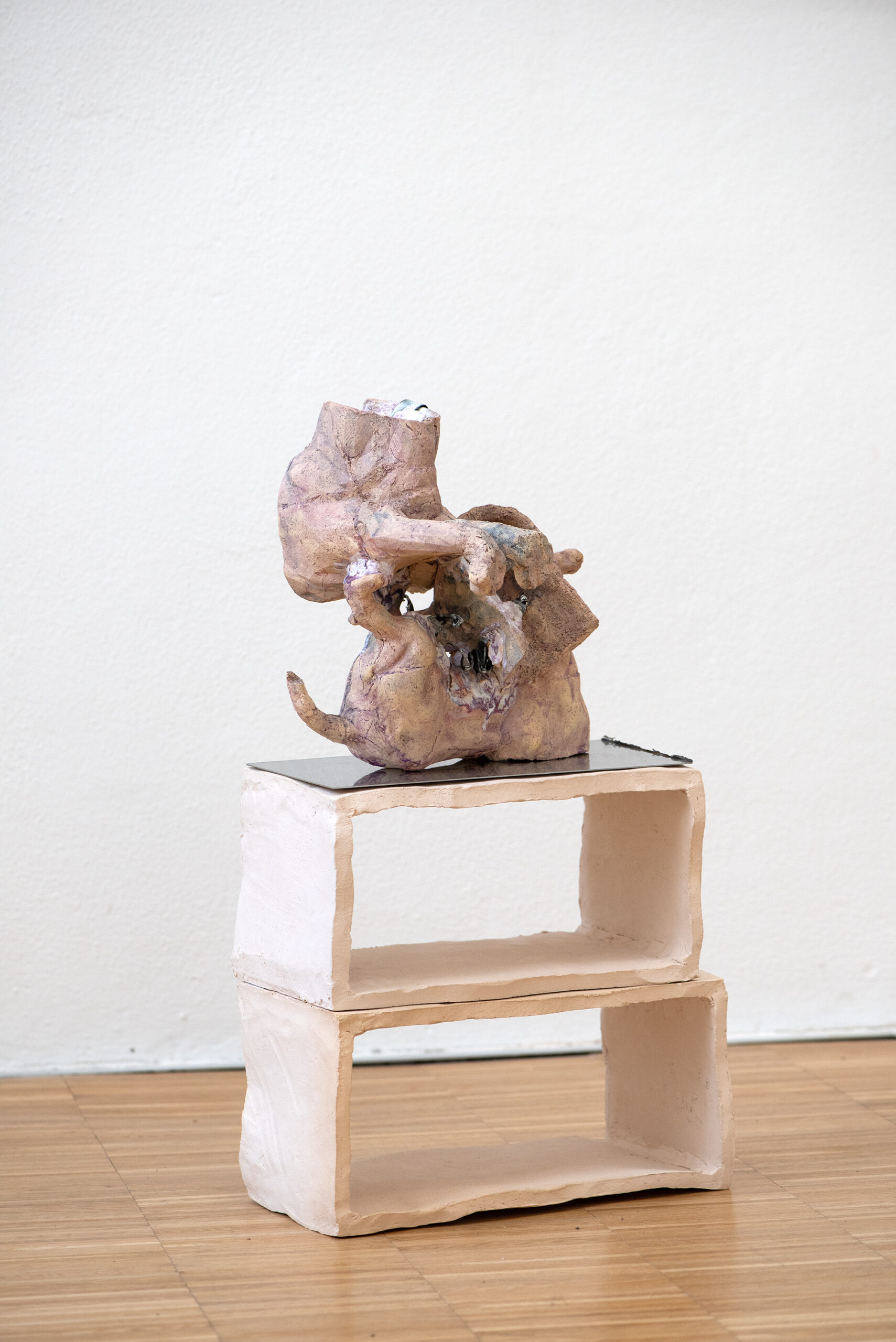
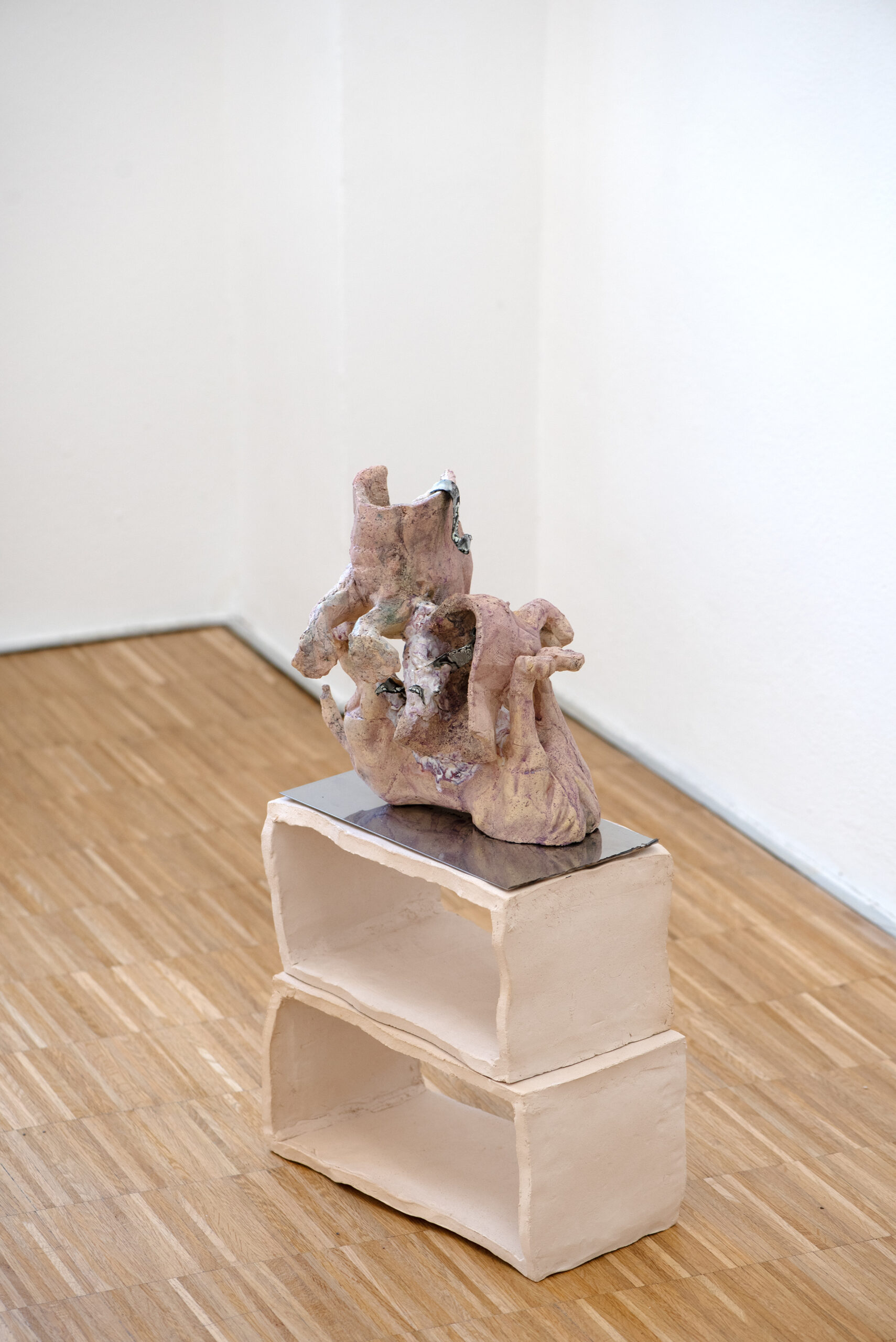
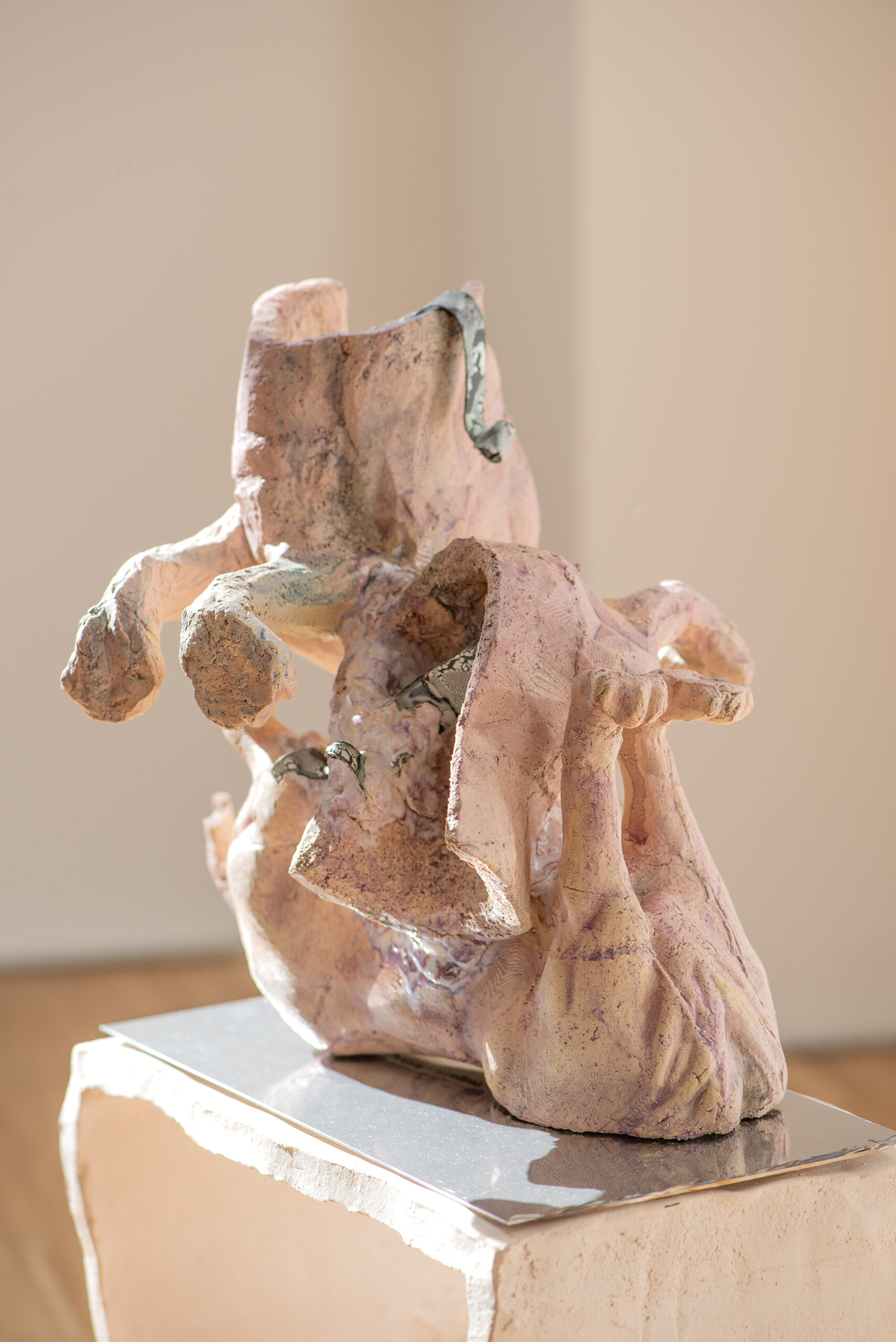
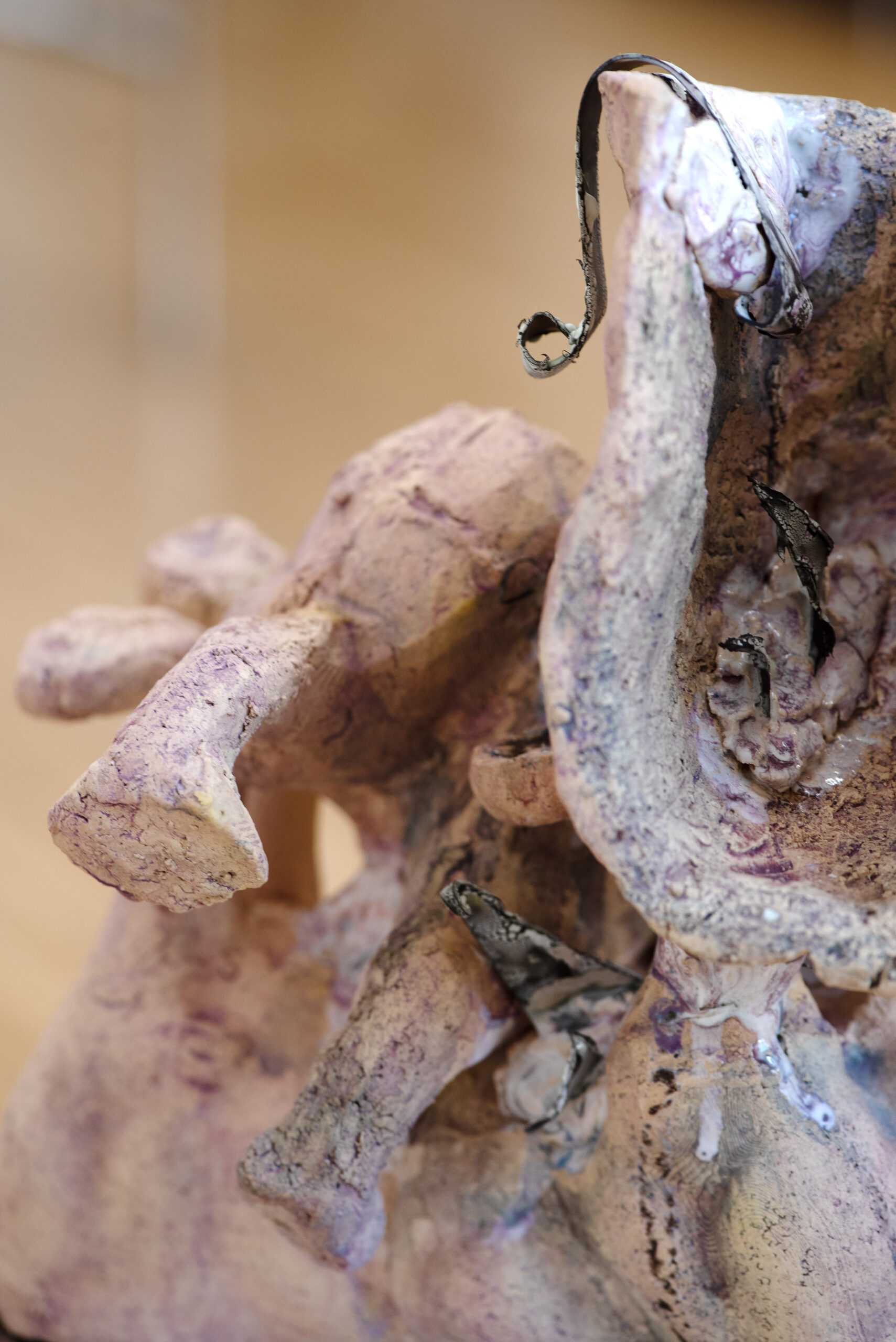
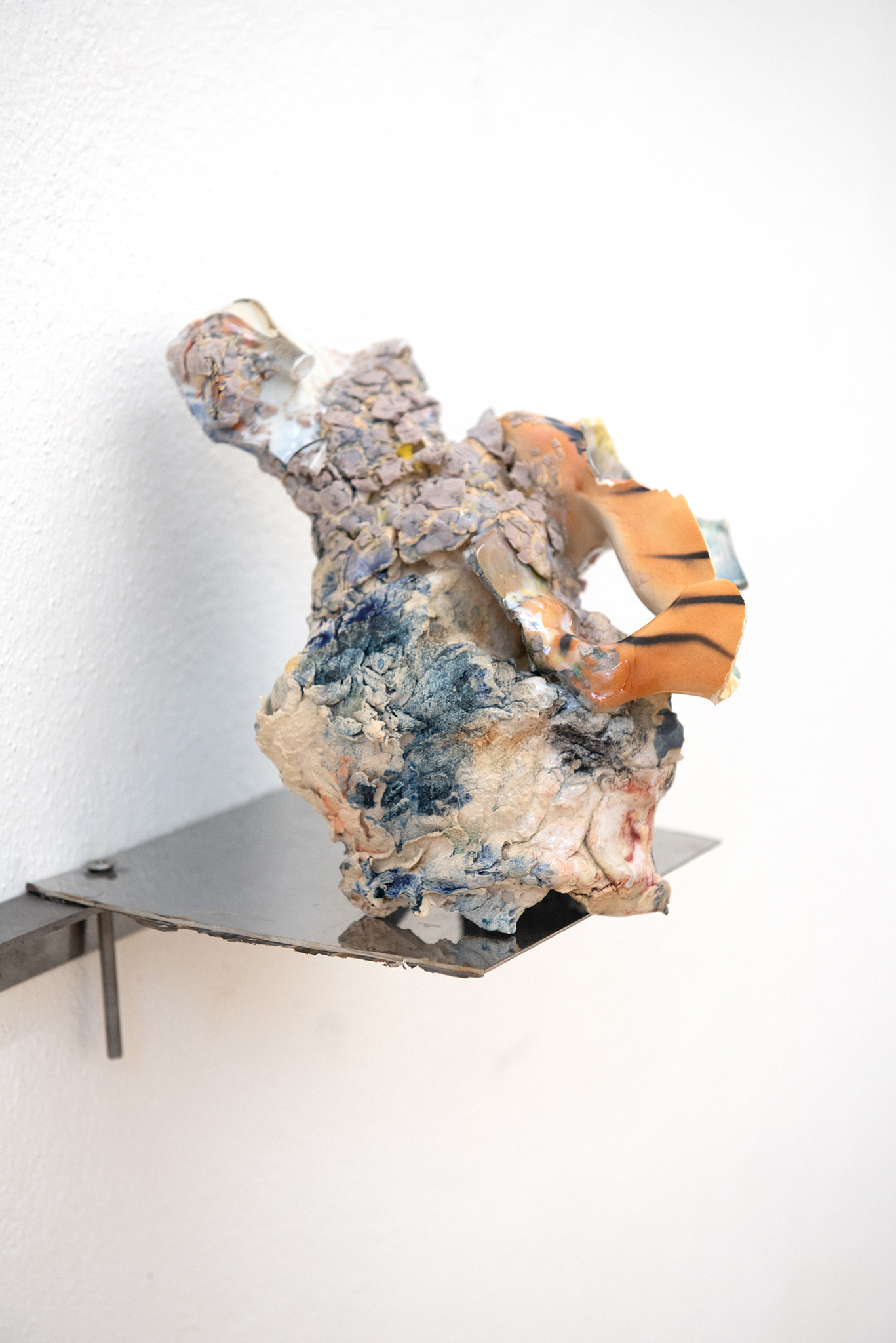


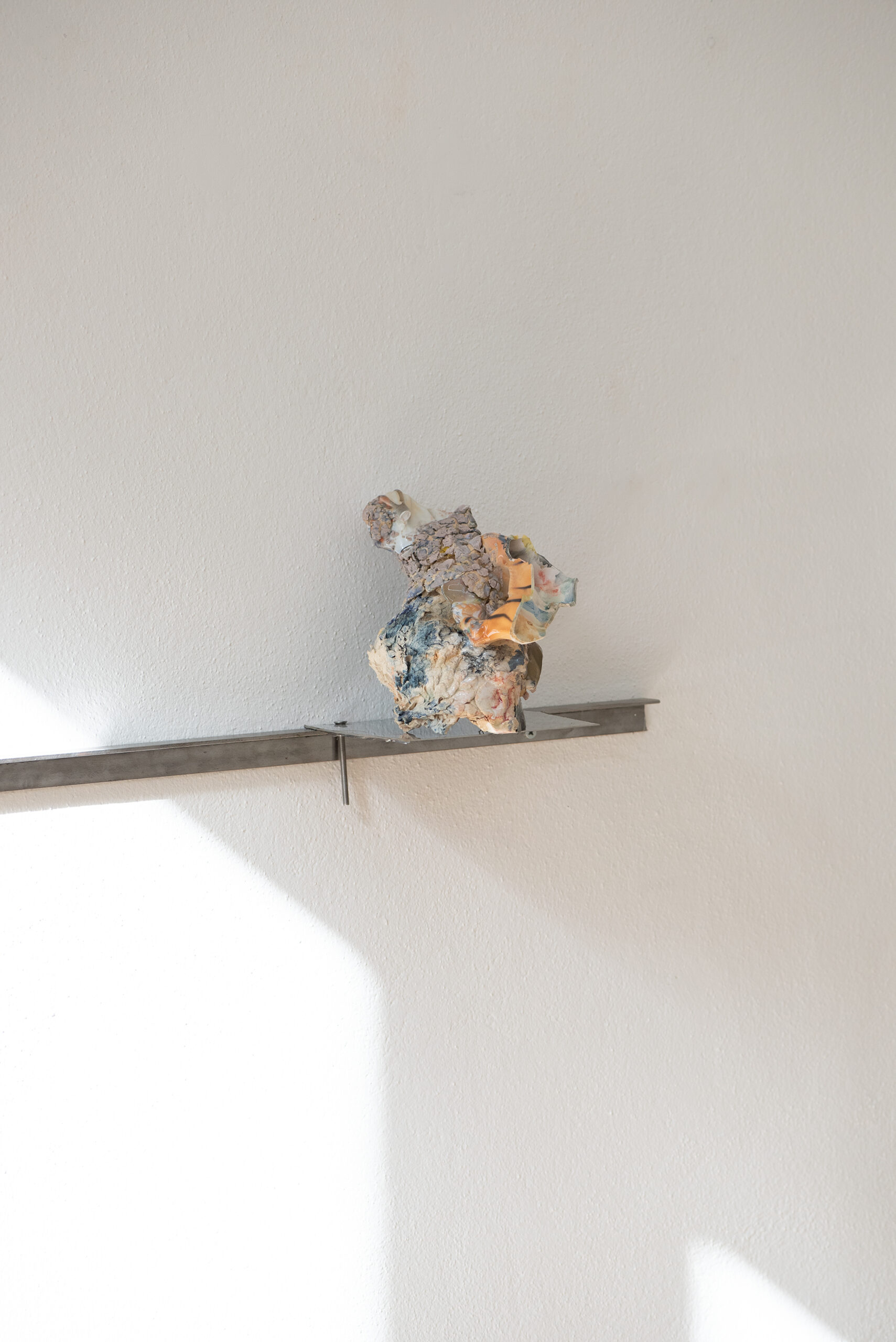
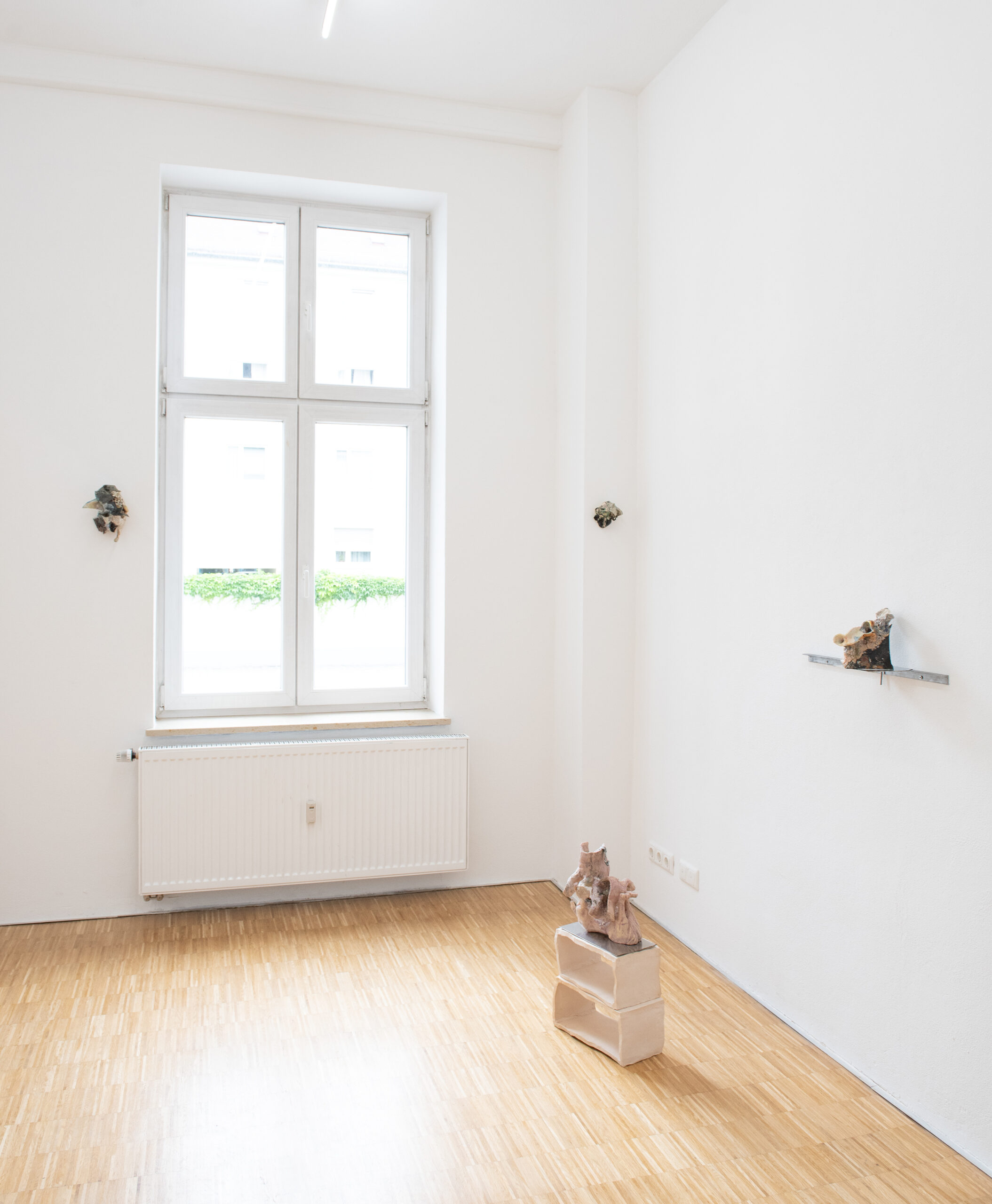
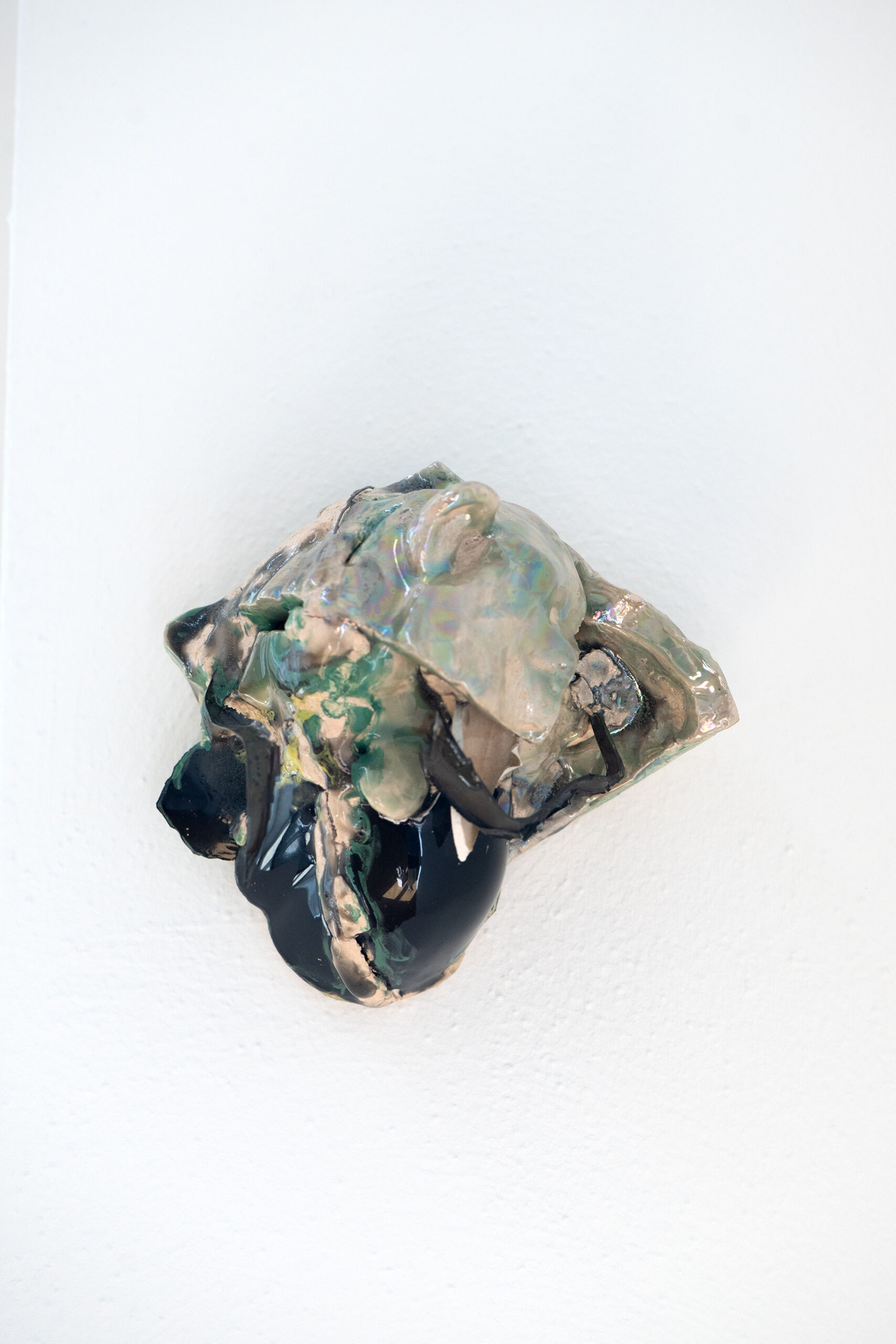
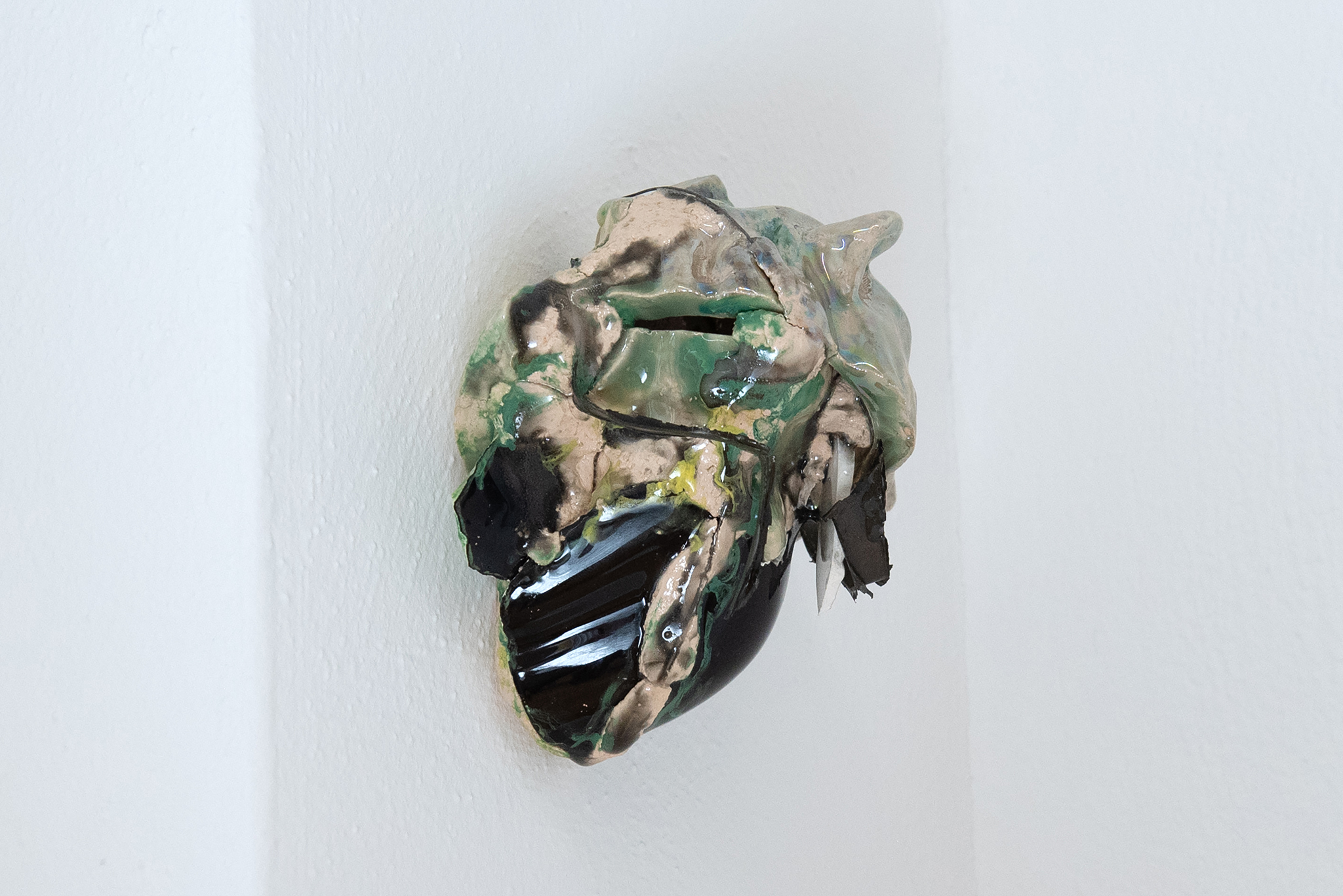
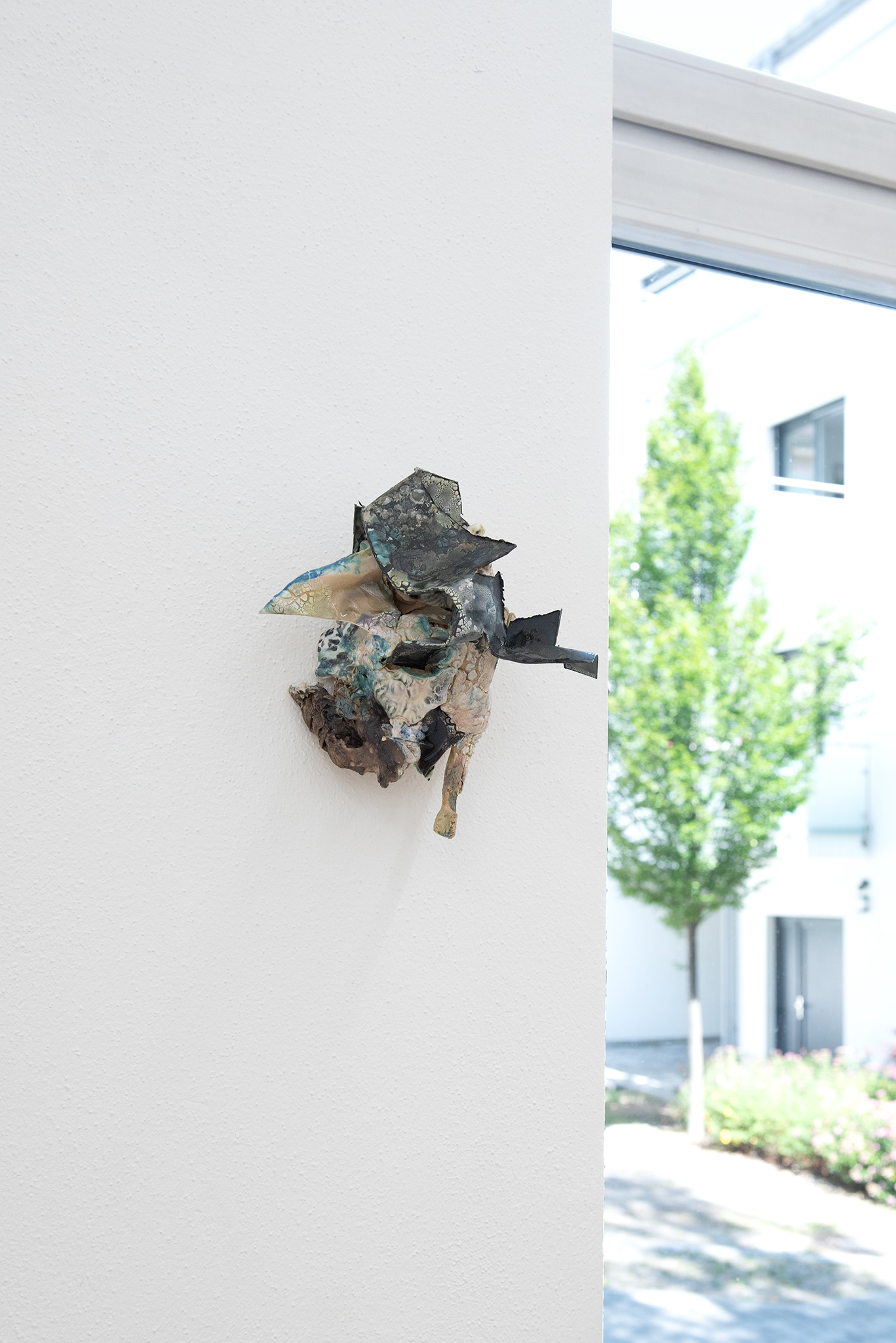
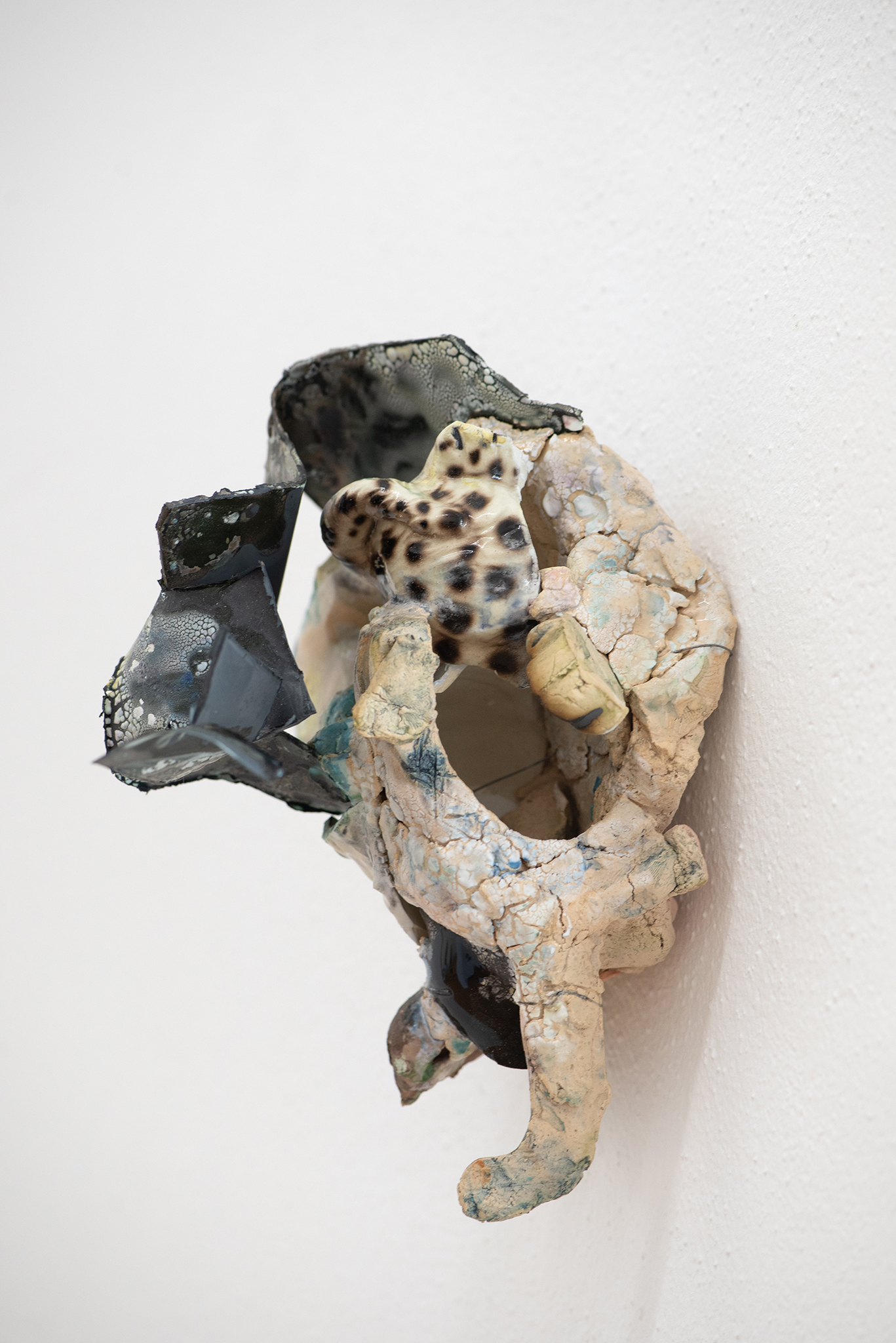
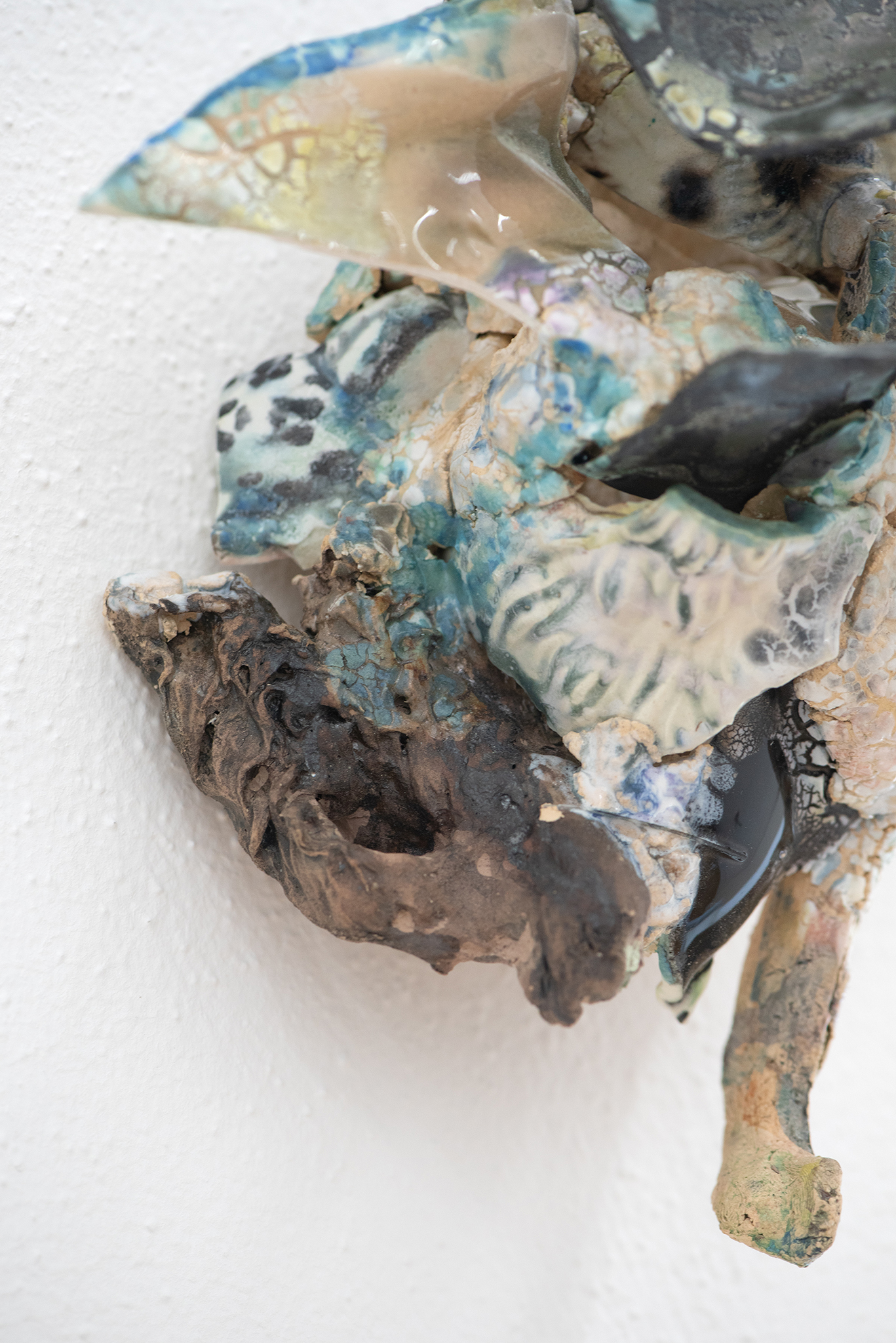
A Chimera is not a Pet
The problem I think, is that too often a chimera is seen as a pet. We visualise chimeras as these mythical fire breathing monsters, maybe with a lion’s head, a body of a goat, and a serpent for a tail. Three distinct animals are combined into one, their individual characteristics clearly visible for us to see. In contrast, biologically, a genetic chimera is often invisible, a nightmarish combination of two different sets of DNA, a result of one or more zygotes fusing together during the early stages of prenatal development. How this alien DNA might manifest is not altogether clear, but you hear stories of mothers having different DNA than their children, and the DNA from semen and saliva not matching in rape tests. To look for distinctions in chimeras would be the first step towards their domestication, treating the hybrid animal as another family member, a pet. But you cannot cuddle the long lost twin you might be carrying with you, inside.
Julia Klemm’s ceramic work often involves a combination of several smaller ceramic pieces, each with their own specific animal DNA. Sometimes these are readymade figurines of cats, lions or horses, glossy and kitsch, inhabitants of Flohmärkte and Omas’ living rooms. At other times, these are recreations of existing public art, of lion statues such as those found on Odeonsplatz, scanned, scaled down and then modelled with a 3D-printed negative mould. Rarely, an animal-type structure is moulded in clay by Julia on the spot, traces of fur scratched with a serrated scraper onto its surface. These smaller animal ceramics are first broken, smashed into almost unrecognisable fragments before they are combined, their intertwining made permanent by the heat of the ceramic oven. I look for these fragments as I walk around the work and try to classify them: look, here are some lion’s legs, and here, a cat’s head, but upside down and half-broken, so that I can see the form inside and outside. Focussing on the surface helps, as I detect the glossy spots of a panther or the layer lines of the 3D printer.
In doing so, I am looking for a pet, with fur strokable like a pastel-coloured soft toy. I try to make the strange shapes of Julia Klemm’s work once again familiar to me. But their outward appearance is a result of a logic that remains hidden. The work demands I see it as a multiplicity, which means in animal terms, as a population. And science teaches us that a population is not a fixed set of individuals of the same species, but an always evolving, interacting mass that changes in relation to its location and environment. The alliances made in a population are not just of the filial kind between individual members of the group, but those made with other groups, other animals, with plants, and with geography. To see the inner workings of the animal in Julia Klemm’s ceramics, I need to step away from the animal and take a more expansive view, one that acknowledges population change forged by mutation. It is very alien to see the world in this way, as foreign and as violent as the shards of steel that interpenetrate the work, both holding it together and ripping it apart.
Text: Magdalena Wisniowska
Eine Chimäre ist kein Haustier
Das Problem ist glaube ich, dass wir bei einer Chimäre allzu schnell an ein Haustier denken. Wir stellen uns Chimären als jene mythischen, feuerspeienden Monster vor, vielleicht ausgestattet mit dem Kopf eines Löwen, dem Körper einer Ziege und dem Schwanz einer Schlange. Wir fügen drei unterschiedliche Tiere zu einem zusammen, deren individuelle Merkmale klar erkennbar für uns bleiben. Eine genetische Chimäre in der Biologie dagegen bleibt meist unsichtbar, eine alptraumhafte Kombination zweier Chromosomensätze, entstanden durch die Verschmelzung einer oder mehrerer Zygoten in den frühesten Stadien der pränatalen Entwicklung. Wie sich diese fremde DNA entwickelt, ist nicht eindeutig geklärt, aber man hört von Müttern, deren DNA sich von jener ihrer Kinder unterscheidet, oder davon, dass in Ver-gewaltigungstests Samen und Speichel nicht übereinstimmen. Nach Unterschieden bei Chimären zu suchen, wäre der erste Schritt in Richtung ihrer Domestizierung und die hybriden Tiere damit als weiteres Familienmitglied zu behandeln: als Haustier. Deinen lang verlorenen Zwilling jedoch, den du möglicherweise in dir trägst, kannst du nicht knuddeln.
Julia Klemms keramische Arbeiten entstehen meist aus der Kombination verschiedener kleiner keramischer Bruch-stücke, jedes mit seiner ganz eigenen tierischen DNA. Manchmal handelt es sich um vorgefertigte Figuren, um jene Katzen, Löwen oder Pferde, die hochglänzend und kitschig die Flohmärkte und Wohnzimmer von Großmüttern bevölkern. In anderen Fällen handelt es sich um Variationen öffentlicher Kunstwerke, von Löwenstatuen wie sie beispielsweise auf dem Odeonsplatz zu finden sind: gescannt, herunterskaliert und mit einer 3D-gedruckten Negativform ausmodelliert. Selten formt Julia die tierähnlichen Gebilde direkt aus Ton und ritzt mit einem gezackten Schaber Fellspuren in ihre Oberfläche. Diese kleineren Tierkeramiken werden sodann zerbrochen, in fast nicht mehr wiedererkennbare Fragmente zerschlagen, bevor sie neu kombiniert werden und sich ihre Verflechtungen in der Hitze des Keramikofens verfestigen. Ich suche nach diesen Fragmenten, während ich die Werke umkreise und versuche sie zu klassifizieren: Schau, hier ein paar Löwenbeine, und hier das Haupt einer Katze, kopfüber und halb zerbrochen, sodass ich die Form gleichzeitig von innen und außen sehen kann. Es hilft, sich auf die Oberfläche zu konzentrieren, um die schimmernden Flecken eines Panthers oder die Schichtlinien des 3D-Druckers zu erkennen.
Damit bin ich wieder auf der Suche nach einem Haustier, mit Fell, das sich streicheln lässt wie ein pastellfarbenes Stofftier. Erneut also versuche ich, mir die fremden Formen in Julia Klemms Arbeiten vertraut zu machen. Ihre äußere Erscheinung ist aber das Ergebnis einer Logik, die verborgen bleibt. Das Werk verlangt, dass ich es als Vielheit betrachte, das heißt im tierischen Sinne als Population. Und die Wissenschaft lehrt uns, dass eine Population nicht aus einer festen Menge von Individuen ein und derselben Art besteht, sondern dass sie eine sich stets entwickelnde und interagierende Masse ist, die sich in Abhängigkeit von ihrem Standort und ihrer Umwelt verändert. Die Bündnisse zwischen einzelnen Gruppenmitgliedern, die in einer Population geschlossen werden, sind nicht nur verwandtschaftlicher Natur, sondern auch solche zwischen anderen Gruppen, zwischen anderen Tieren, zwischen Pflanzen und der Geografie. Um das Innenleben des Tieres in Julia Klemms keramischen Arbeiten wahrzunehmen, muss ich von dem Tier absehen und eine umfassendere Sichtweise einnehmen; eine, die anerkennt, dass Mutation den Wandel von Populationen verschweißt. Es ist sehr fremd, die Welt auf diese Weise zu betrachten, so befremdlich und gewalttätig wie die Stahlsplitter, die das Werk durchdringen, die es zusammenhalten und gleichzeitig zerreißen.
Text: Magdalena Wiśniowska
Übersetzung: Dr. Tanja Klemm
Installation views
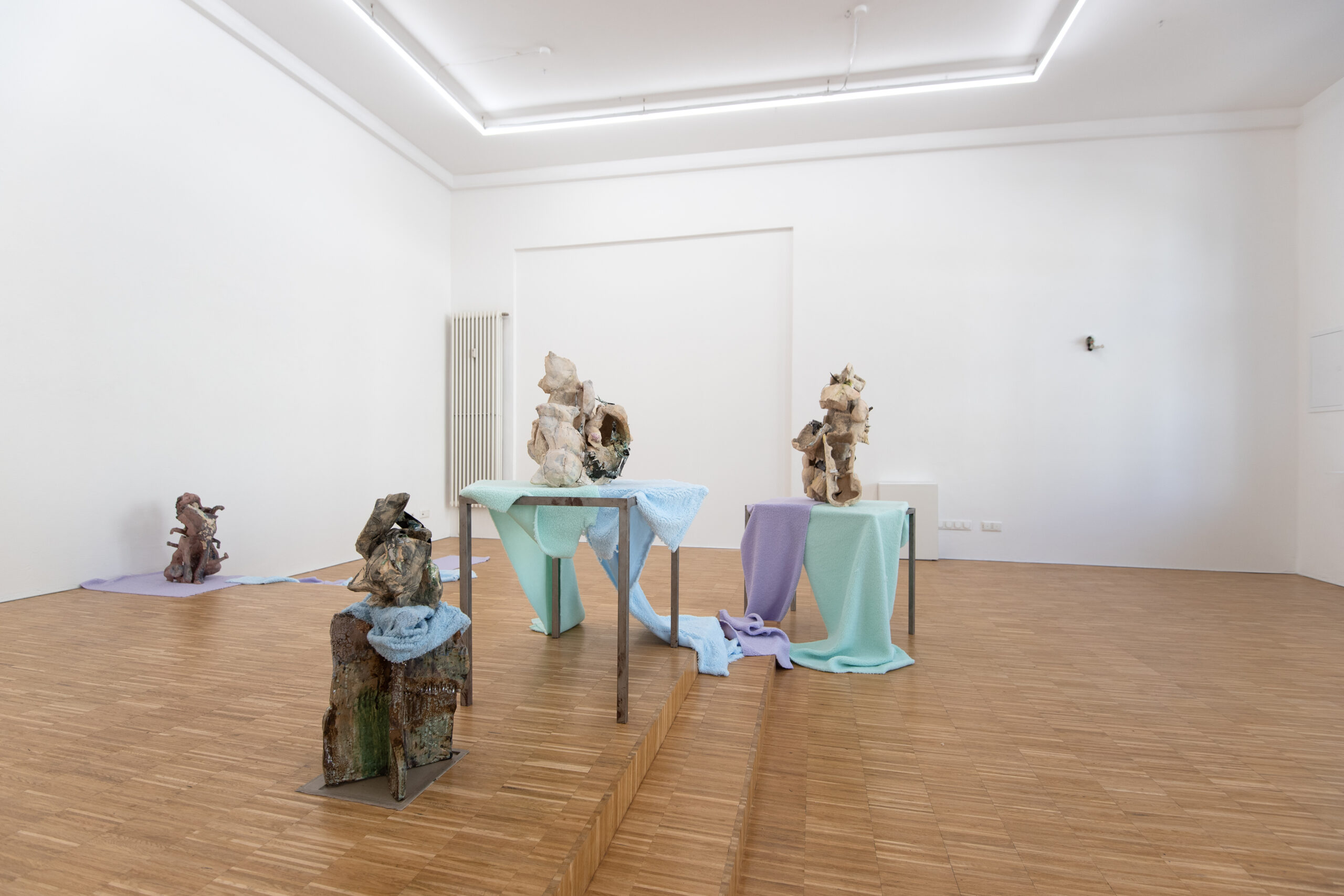
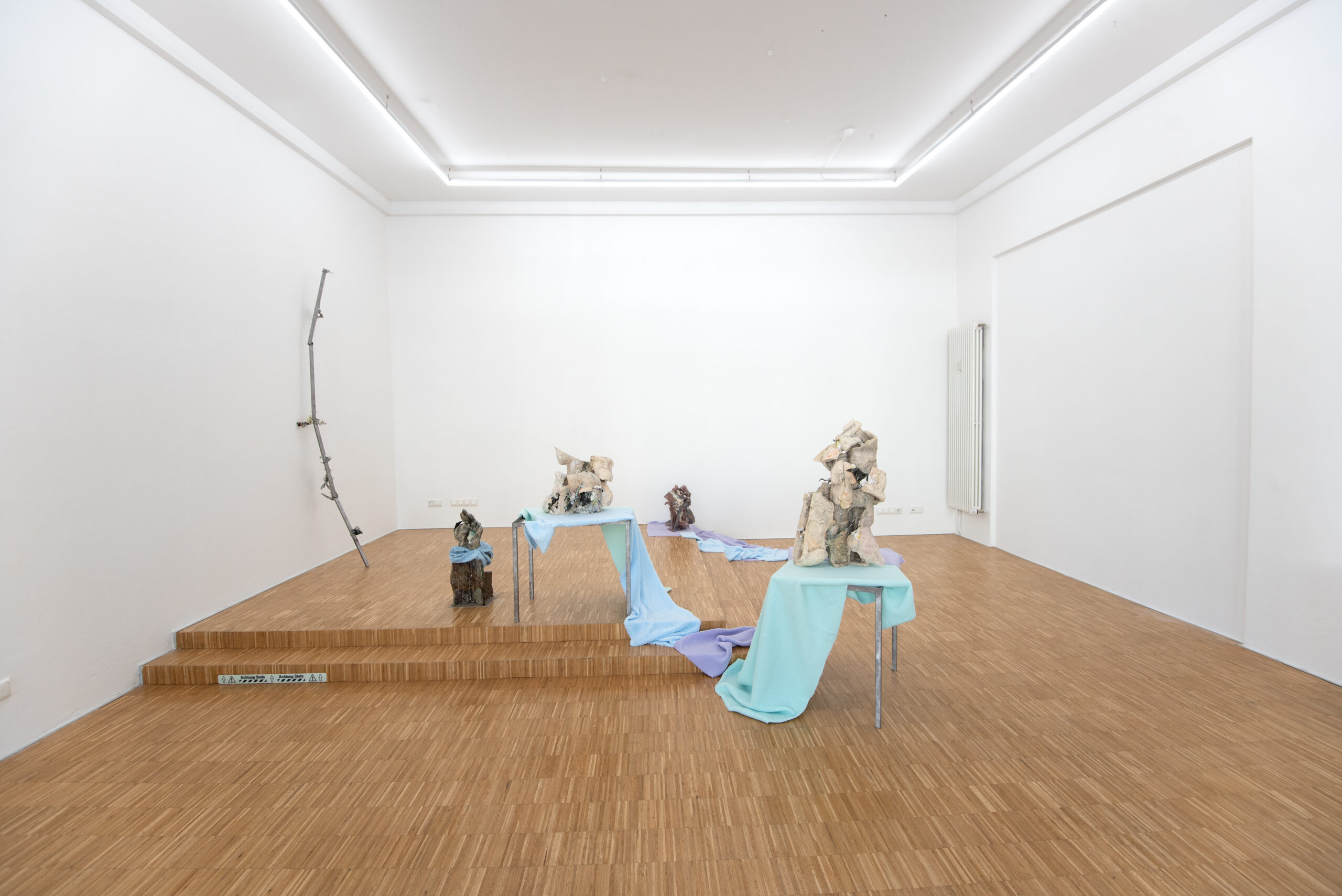
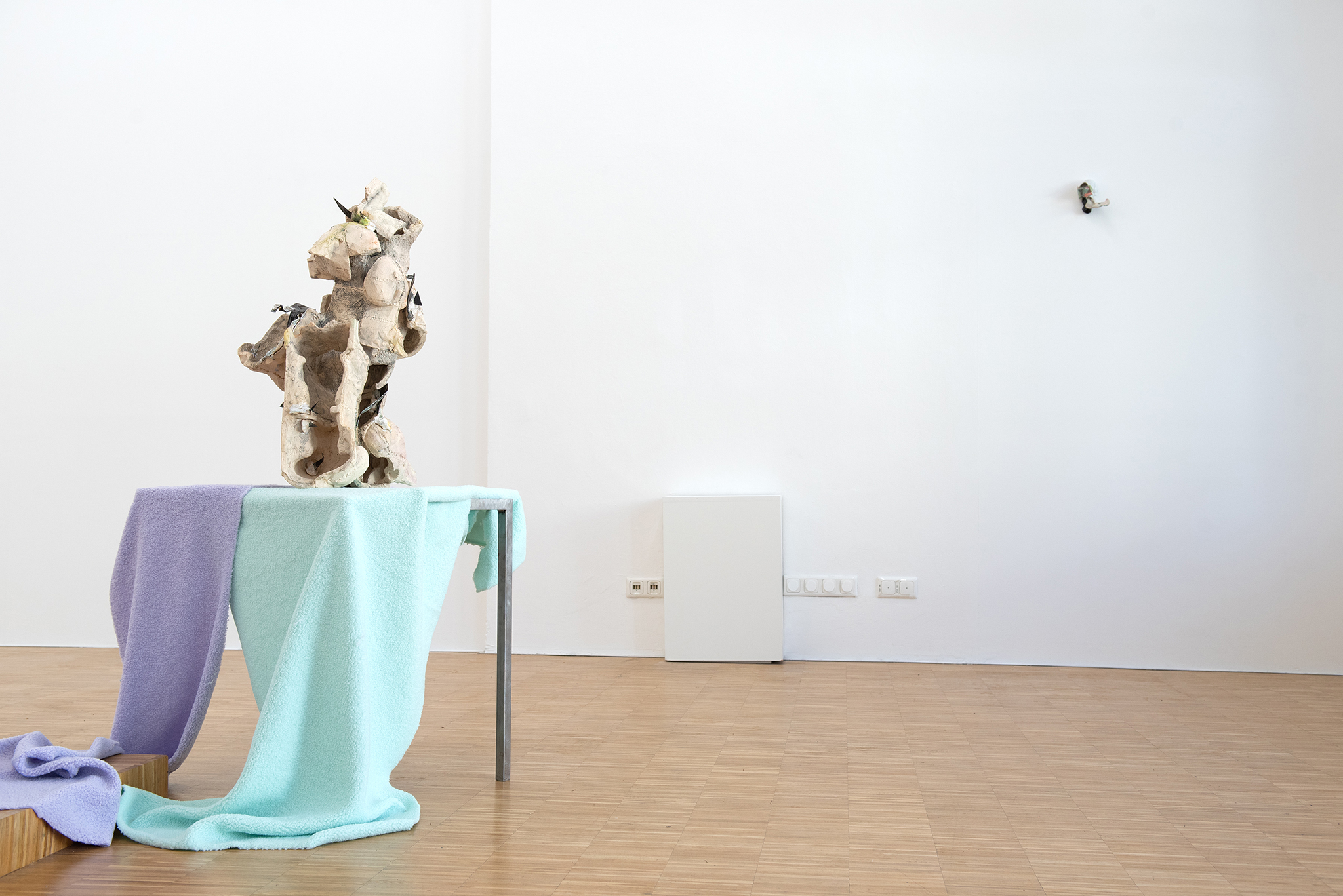


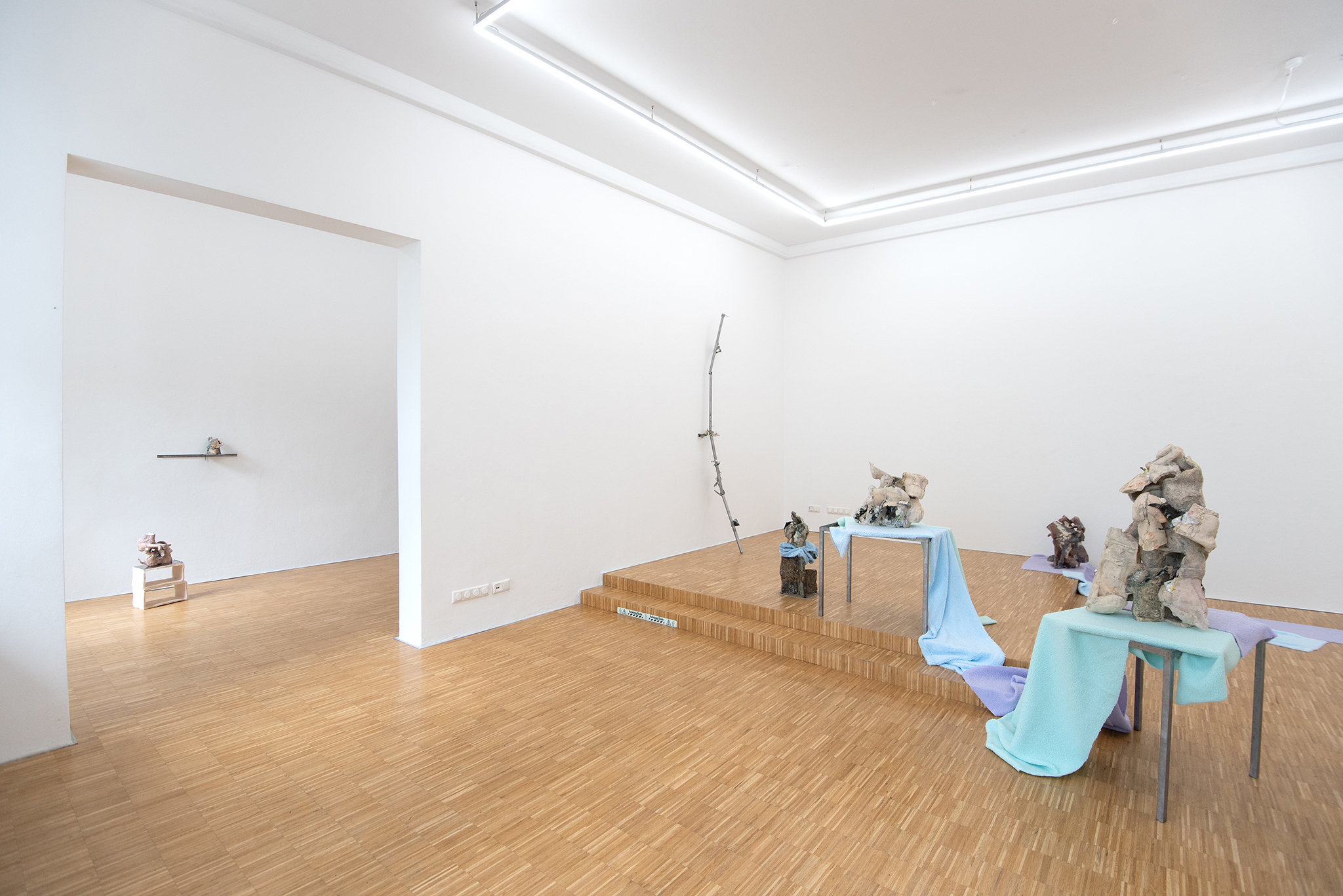
Artist
Works
If you are interested, please inquire about availability

Untitled2025
Julia Klemm
Secondhand Keramiktierfiguren,
Stofftiertransformation, Lüster, Keramik, Glasur
12 x 14 x 11 cm

A Chimera is not a Pet 42025
Julia Klemm
Secondhand Keramiktierfiguren, Stahl, Glasur, Keramik, Schrauben
27 x 46 x 260 cm
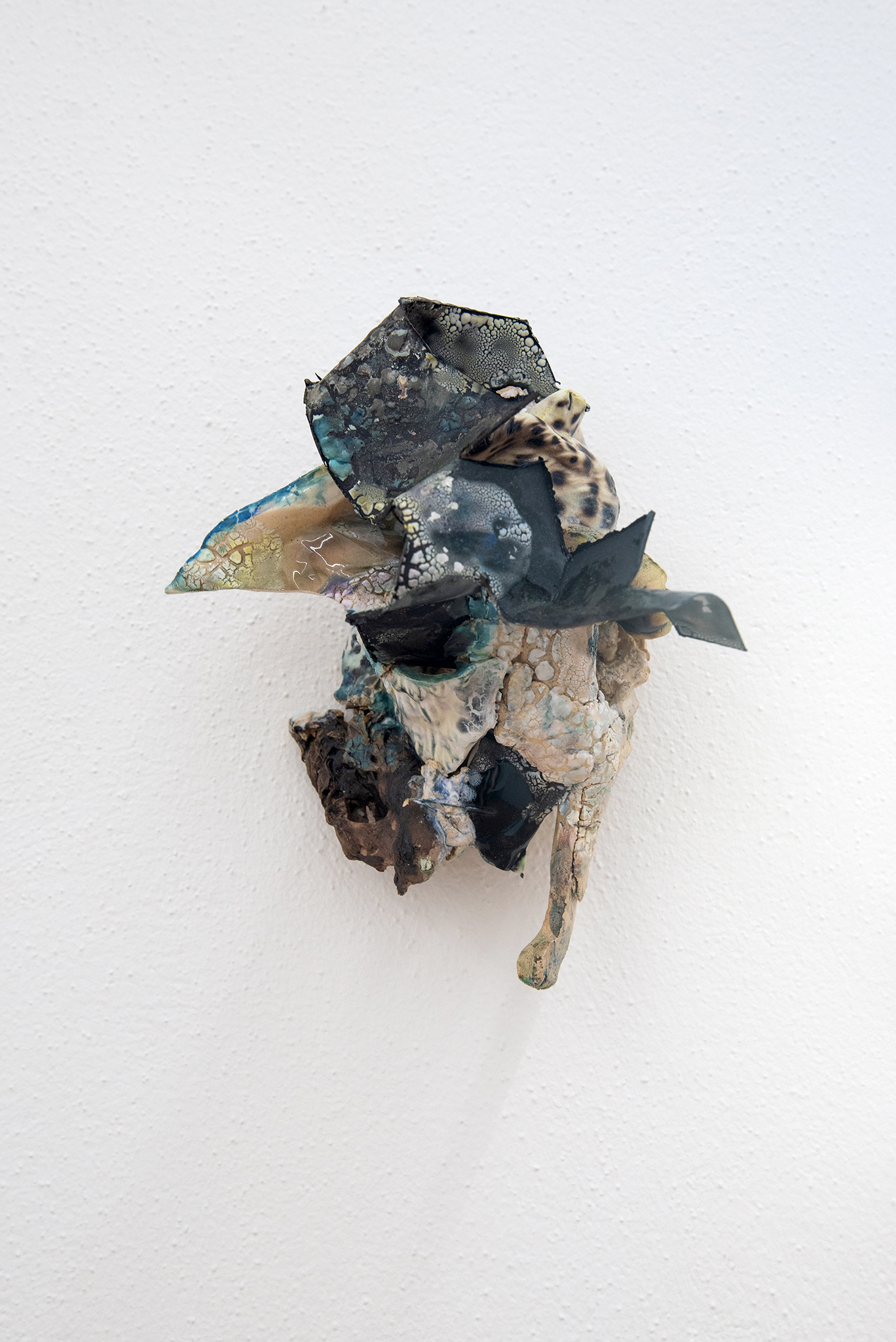
Gryphon2025
Julia Klemm
Secondhand Keramiktierfiguren, Stofftiertransformation, Glasur, Keramik, Stahl
18 x 22 x 17 cm
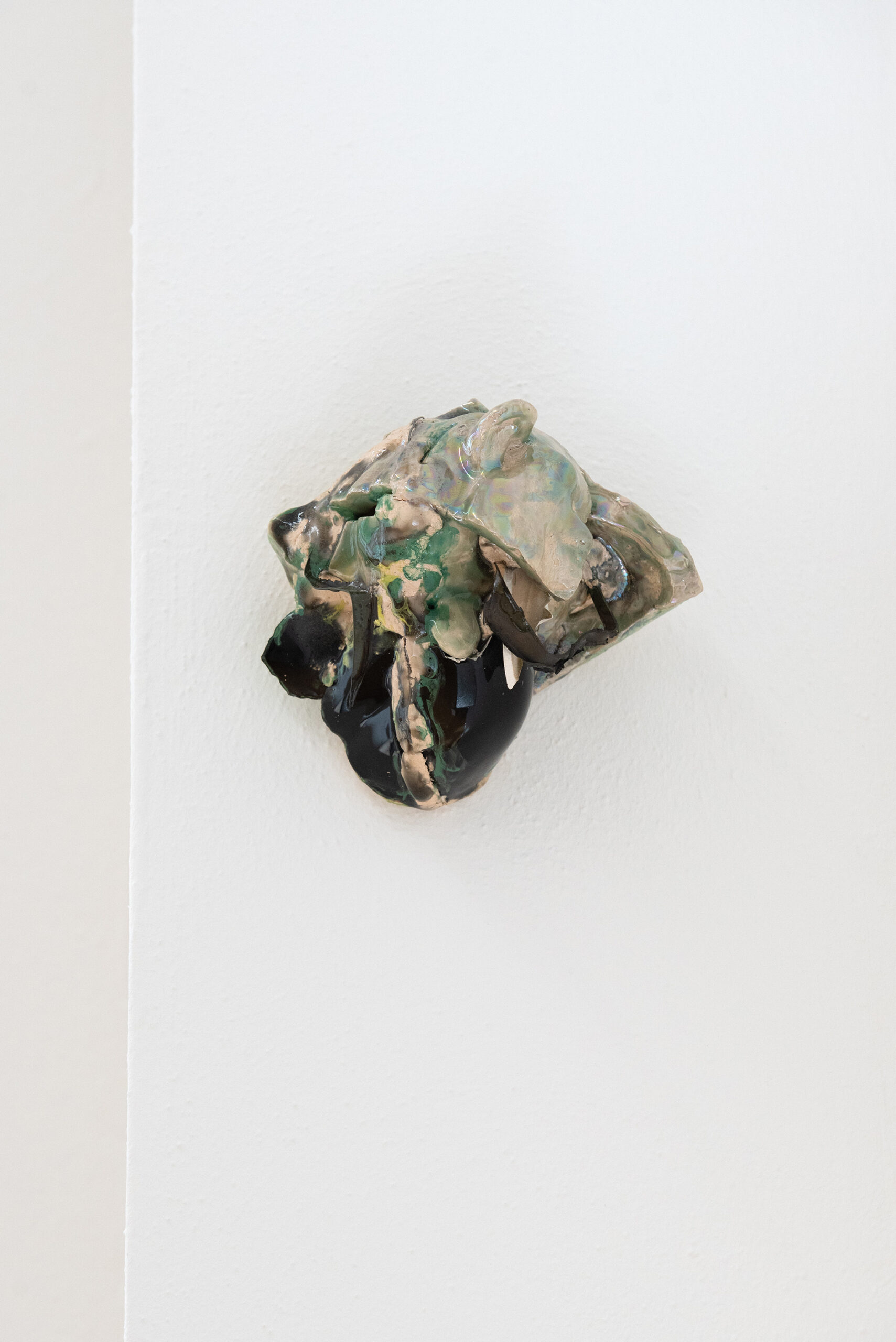
Mimicry2025
Julia Klemm
Secondhand Keramiktierfiguren, Stahl, Lüster, Glasur, Keramik
12 x14 x 8 cm

A Chimera is not a Pet 12025
Julia Klemm
Secondhand Keramiktierfiguren, Glasur, Stofftiertransformation, Keramik, Stahl
15 x 25 x 14.5 cm
